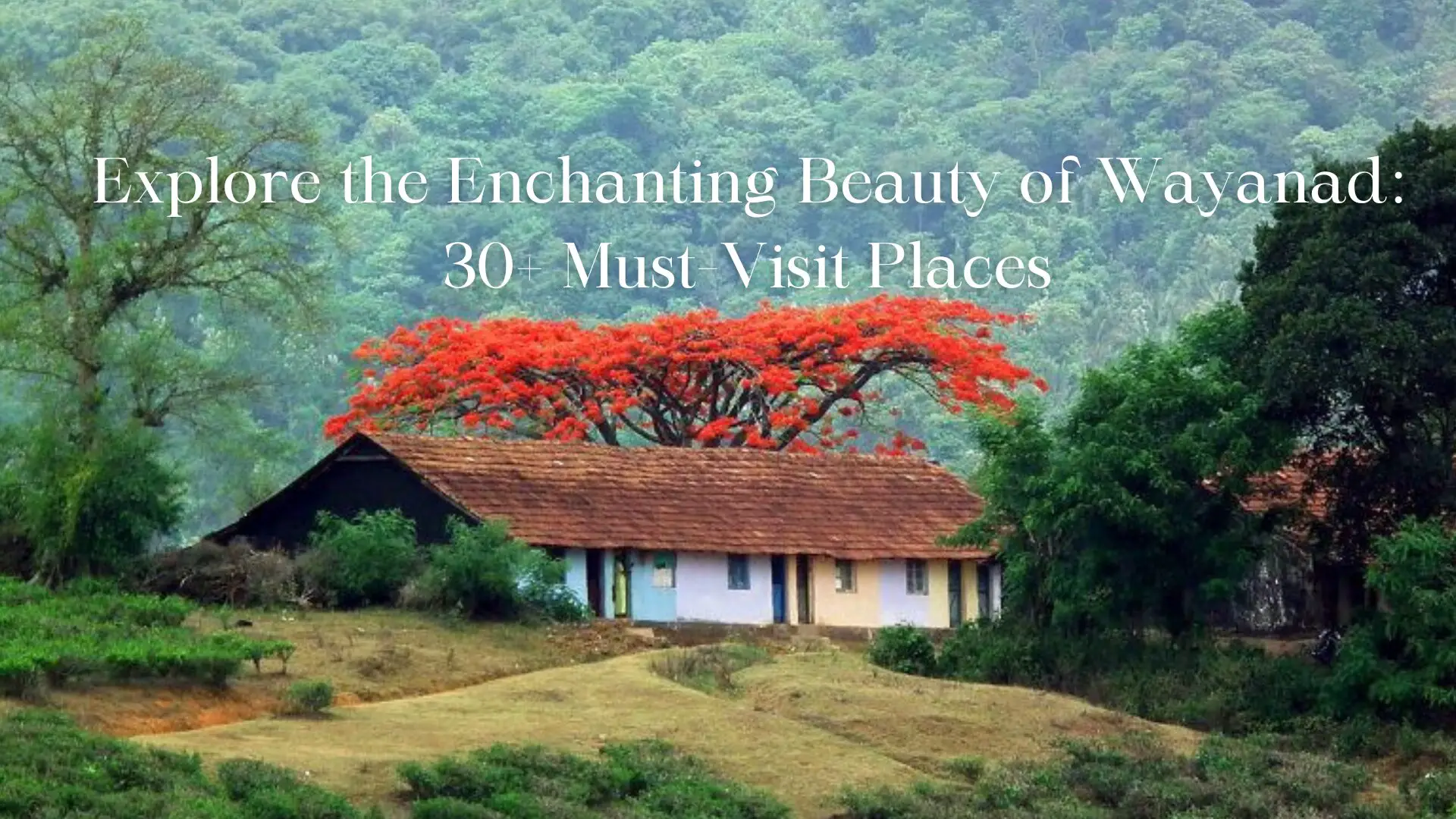Nestled in the verdant hills of Kerala, Wayanad is a paradise for nature lovers and adventure enthusiasts alike. From picturesque waterfalls and lush green landscapes to historic temples and wildlife sanctuaries, Wayanad offers a diverse range of attractions that will leave you mesmerized. Let’s embark on a virtual journey to discover 30+ must-visit places in Wayanad.
Unveiling the Mysteries of Edakkal Caves: A Journey Through Time
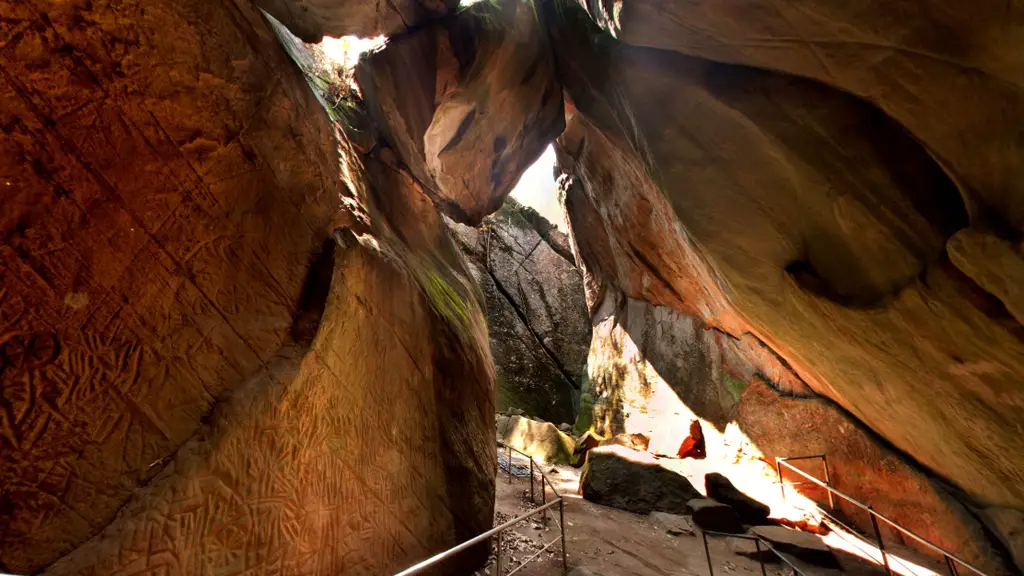
Nestled amidst the lush hills of Wayanad in Kerala, Edakkal Caves stand as silent witnesses to the rich tapestry of human history. These ancient caves, perched on Ambukuthi Hills, offer more than just a stunning panorama of the Western Ghats; they provide a unique glimpse into the past through their mesmerizing petroglyphs.
Exploring the Caves:
Edakkal, meaning ‘a stone in between,’ aptly describes the formation of these caves. The natural clefts and crevices in the rock have created two large chambers, making it a distinctive archaeological site. As you embark on the trek to reach the caves, the anticipation builds, and the beauty of the surroundings enhances the sense of adventure.
Historical Significance:
Edakkal Caves date back over 8,000 years, with the petroglyphs etched on the cave walls providing a fascinating link to prehistoric times. These rock engravings, believed to be from the Neolithic and Mesolithic ages, depict scenes of daily life, symbols, and animals. The site’s historical significance lies not only in the age of the carvings but also in the stories they tell about the people who once inhabited this region.
Panoramic Views:
Reaching the summit and entering the caves, visitors are treated to breathtaking panoramic views of the surrounding landscapes. The vantage point from within the caves provides a sense of awe, as if the ancient artists strategically chose this location to be in harmony with the natural beauty that unfolds before your eyes.
The Trekking Experience:
The journey to Edakkal Caves is an adventure in itself. The trek takes you through dense forests and rocky terrain, adding an element of thrill to the overall experience. The effort is rewarded not only by the historical treasures within the caves but also by the sense of accomplishment that comes from conquering the ascent.
Preservation Efforts:
In recent years, there has been a heightened focus on preserving Edakkal Caves and its invaluable petroglyphs. Conservation measures ensure that future generations can continue to marvel at the ancient artistry and gain insights into the lives of those who lived in this region thousands of years ago.
Chembra Peak: A Majestic Ascent into the Heart of Wayanad
In the embrace of Wayanad’s verdant landscapes, Chembra Peak stands tall as a beacon for adventure seekers and nature enthusiasts alike. Offering more than just a trekking expedition, this majestic peak provides a panoramic canvas of the Western Ghats, making it a must-visit destination for those craving a rendezvous with nature’s grandeur.
The Tallest Peak in Wayanad:
At an elevation of 2,100 meters above sea level, Chembra Peak proudly holds the title of the highest point in Wayanad. As you embark on the trek to conquer its summit, the lush greenery and the crisp mountain air create an ambiance of tranquility and anticipation.
The Heart-Shaped Lake:
One of the highlights of the Chembra Peak trek is the heart-shaped lake nestled atop the summit. The trek itself, while challenging, is rewarded by the sight of this enchanting lake—a natural reservoir formed by a perennial spring. The heart-shaped formation adds a touch of romance to the rugged mountainous terrain, making it a favorite among trekkers and nature lovers.
Trekking to the Top:
The trek to Chembra Peak unfolds like a story, with each step revealing a new facet of the landscape. The trail takes you through dense forests, grassy meadows, and rocky paths, offering a diverse range of experiences. Trekkers often encounter a variety of flora and fauna, adding to the allure of the journey.
Panoramic Views:
Reaching the summit of Chembra Peak is a moment of triumph, both physically and visually. The panoramic views from the top stretch as far as the eye can see, encompassing the sprawling tea estates, dense forests, and distant mountain ranges. It’s a breathtaking spectacle that serves as a reminder of the untamed beauty of Wayanad.
Preserving the Ecological Balance:
Chembra Peak, part of the Wayanad Wildlife Sanctuary, is not just a destination; it’s a fragile ecosystem that requires responsible tourism. Authorities and local communities are actively engaged in preserving the natural habitat, ensuring that the allure of Chembra Peak remains for generations to come.
Soochipara Waterfalls: Nature’s Cascade of Serenity in Wayanad
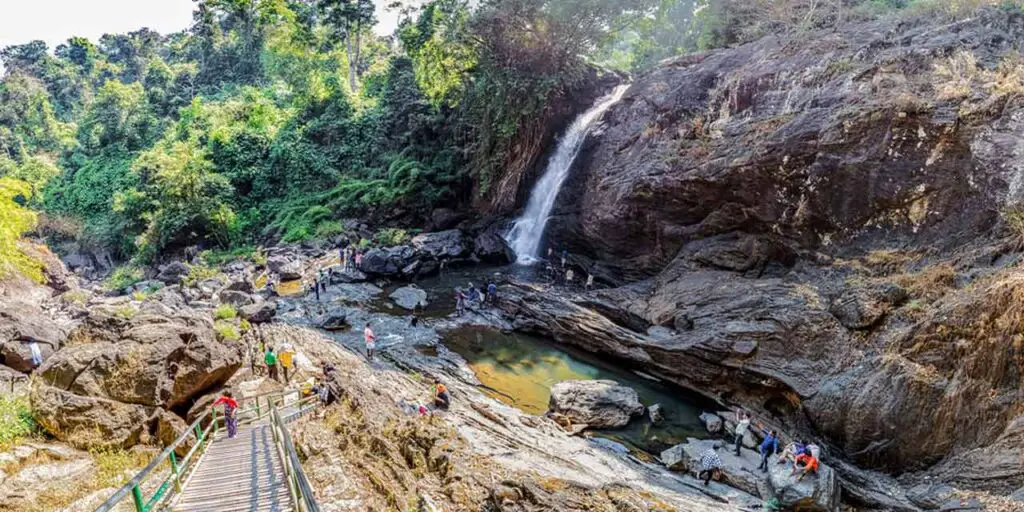
Nestled in the heart of Wayanad’s pristine landscapes, Soochipara Waterfalls, also known as Sentinel Rock Waterfalls, beckon visitors with their enchanting beauty. Far away from the bustle of urban life, this natural spectacle offers a serene escape into the lap of nature, making it a must-visit destination for those seeking tranquility and scenic marvels.
The Cascading Symphony:
As the cascading waters plunge from a height of around 200 meters, Soochipara Waterfalls create a symphony of sounds that echo through the dense Western Ghats. The name “Soochipara” translates to “Needle Rock,” aptly describing the needle-like rock formation near the falls that adds to the site’s uniqueness.
Trek to the Falls:
The journey to Soochipara Waterfalls involves a trek through the dense, evergreen forests of Wayanad. The trek, while moderate in difficulty, unfolds like an adventure, with lush vegetation and the promise of a breathtaking reward at the end. The trail is surrounded by a rich variety of flora and fauna, offering nature enthusiasts a delightful experience.
Swimming and Relaxation:
Upon reaching the base of Soochipara Waterfalls, visitors are greeted by a large pool formed by the cascading waters. The cool and crystal-clear pool beckons for a refreshing dip, making it a popular spot for those seeking respite from the tropical heat. The surrounding rocks provide ideal perches for visitors to relax, picnic, or simply bask in the natural beauty that envelops them.
Preservation Efforts:
Soochipara Waterfalls, located within the Meppadi Forest Range, is part of the Wayanad Wildlife Sanctuary. Efforts are continually made to preserve the ecological balance of the area, ensuring that the flora and fauna thrive undisturbed. Visitors are encouraged to be responsible tourists, leaving no trace of their presence and respecting the delicate ecosystem.
Panoramic Views:
Apart from the falls, the viewpoint near Soochipara offers breathtaking panoramic views of the surrounding landscapes. The lush greenery, rolling hills, and the distant horizon create a picturesque setting, making it an ideal spot for capturing the beauty of Wayanad on camera.
Banasura Sagar Dam: Where Nature and Engineering Converge
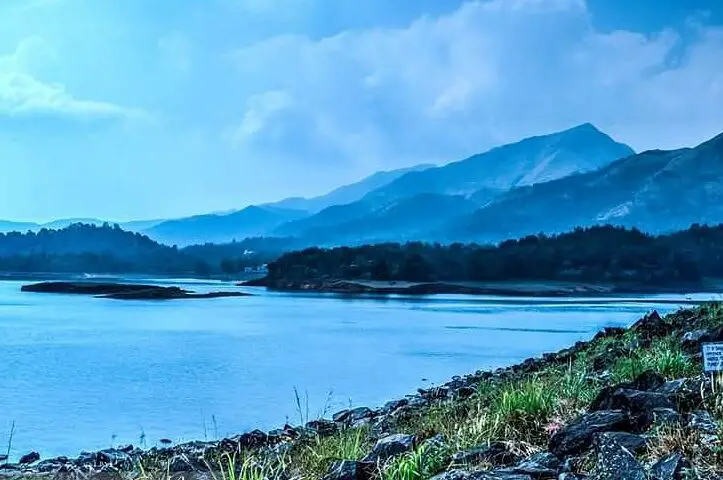
Nestled in the picturesque hills of Wayanad, Kerala, Banasura Sagar Dam stands as a testament to the harmonious coexistence of nature and human ingenuity. As the largest earthen dam in India, this engineering marvel not only serves practical purposes but also offers visitors a breathtaking encounter with the scenic beauty of Wayanad’s landscape.
Engineering Marvel Amidst Nature:
Banasura Sagar Dam, built across the Karamanathodu River, is a stunning example of modern engineering seamlessly blending with the natural topography. The dam, constructed using massive stacks of stones and boulders, creates a vast reservoir that provides irrigation to the surrounding areas while also generating hydroelectric power.
Surrounded by Hills:
What makes Banasura Sagar Dam truly enchanting is its setting amidst the Banasura Hills. The dam is embraced by lush greenery and rolling hills, creating a serene ambiance that captivates the hearts of visitors. The tranquil waters of the reservoir, framed by the verdant landscape, make it an ideal spot for those seeking a peaceful retreat.
Boating on the Reservoir:
One of the highlights of a visit to Banasura Sagar Dam is the opportunity to go boating on the reservoir. Pedal boats and rowboats are available for visitors to explore the vast expanse of the reservoir while enjoying the panoramic views of the surrounding hills. The leisurely boat ride offers a unique perspective of the dam and its natural surroundings.
Island Hopping Experience:
The dam is renowned for its unique feature – a set of islands that emerge when the water levels recede. Known as the Banasura Islands, these pockets of land provide visitors with a surreal island-hopping experience during the dry season. The islands, surrounded by the tranquil waters of the reservoir, add to the allure of the dam.
Nature Trails and Trekking:
Surrounding Banasura Sagar Dam are nature trails and trekking routes that allow visitors to explore the lush wilderness of Wayanad. The trek to Banasura Peak offers panoramic views of the dam and its surroundings, rewarding trekkers with a sense of accomplishment and a connection to nature.
Ecotourism Initiatives:
Banasura Sagar Dam is not just a tourist destination; it is also a hub for ecotourism initiatives. The responsible management of the site ensures the preservation of the natural ecosystem and encourages visitors to appreciate the delicate balance between human activities and the environment.
Pookode Lake: Tranquil Waters Amidst Wayanad’s Green Embrace
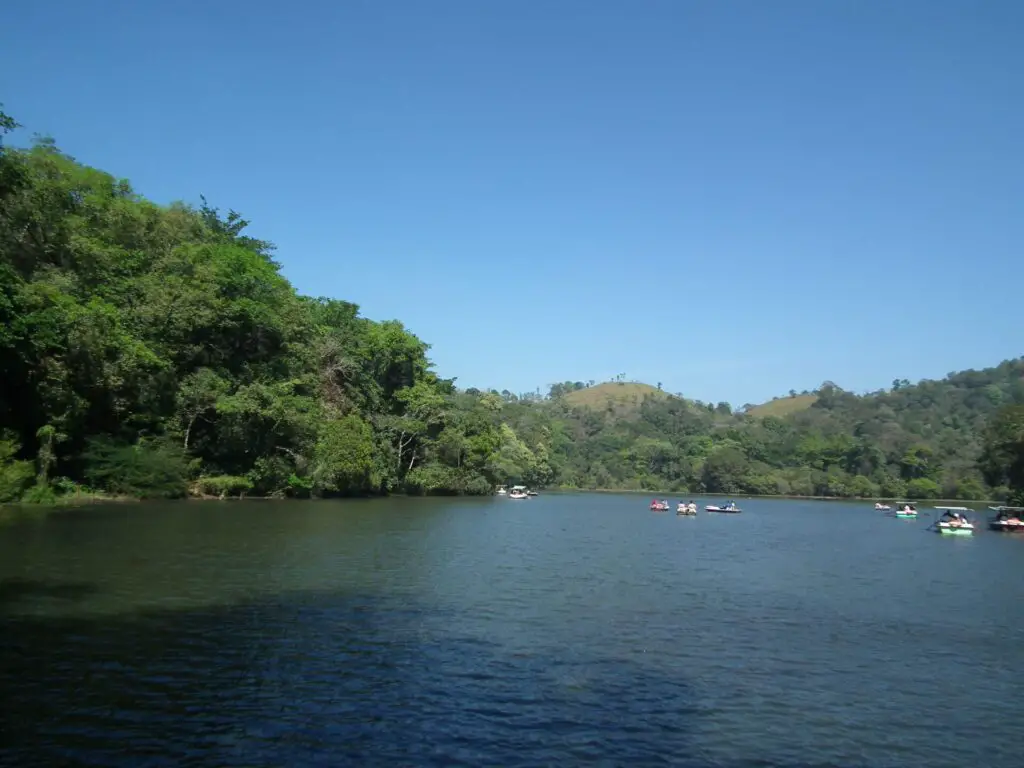
Nestled amidst the lush landscapes of Wayanad in Kerala, Pookode Lake stands as a serene oasis, inviting visitors into its tranquil waters and verdant surroundings. This natural freshwater lake is not merely a body of water; it is a haven where nature’s beauty and tranquility converge, creating a peaceful escape for those seeking respite.
Embraced by Verdant Hills:
Pookode Lake is cradled by emerald hills and dense forests, creating a mesmerizing backdrop that adds to the allure of this natural gem. The lake is situated at an altitude of approximately 770 meters above sea level, making it an ideal destination for those yearning for a cool and refreshing retreat.
Boating Amidst Nature’s Symphony:
One of the enchanting experiences at Pookode Lake is the opportunity to go boating on its pristine waters. Pedal boats and rowboats are available for visitors, allowing them to leisurely glide over the clear lake while absorbing the scenic beauty that surrounds them. The rhythmic paddling and the gentle ripples of the water create a soothing symphony of nature.
Rich Biodiversity:
The lush greenery around Pookode Lake is not only a treat for the eyes but also a habitat for diverse flora and fauna. The lake and its surroundings are home to various species of birds, butterflies, and fish, offering nature enthusiasts an opportunity to witness the rich biodiversity of Wayanad.
A Walk in the Greenery:
Surrounding Pookode Lake is a well-maintained pathway that invites visitors to take a leisurely stroll amid nature’s bounty. The pathway is shaded by towering trees, providing a cool respite, and it offers glimpses of the lake from different angles, allowing visitors to fully immerse themselves in the serene ambiance.
Picnic Spots and Playgrounds:
Pookode Lake is not just for those seeking quiet contemplation; it is also a perfect spot for families and groups of friends. Picnic spots and playgrounds dot the lake’s periphery, providing ample space for relaxation, games, and enjoying a meal amidst the picturesque surroundings.
Preservation and Responsible Tourism:
Efforts to preserve the ecological balance of Pookode Lake are evident, with responsible tourism practices in place. Visitors are encouraged to respect the natural environment, dispose of waste responsibly, and contribute to the conservation of this pristine ecosystem.
Thusharagiri Waterfalls: A Symphony of Nature’s Splendor in Wayanad
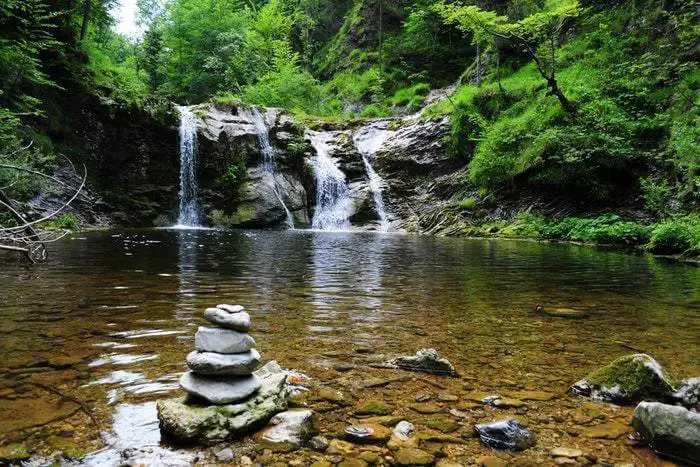
Tucked away in the heart of Wayanad’s pristine landscape, Thusharagiri Waterfalls stands as a natural masterpiece, captivating visitors with its cascading beauty and tranquil surroundings. Comprising a series of three mesmerizing waterfalls, Thusharagiri invites nature enthusiasts and adventure seekers alike to revel in the symphony of water and greenery.
The Trio of Waterfalls:
Thusharagiri, translating to ‘the land of misty hills,’ is aptly named for the three waterfalls—Ezhattumugham, Erattumukham, and Mazhavil Chattom—that collectively create a visual and auditory feast for those who venture into this scenic haven. Each waterfall presents a unique charm, contributing to the overall allure of Thusharagiri.
Trekking Through Nature’s Canvas:
For the adventurous at heart, Thusharagiri offers a trekking experience that winds through lush forests, rubber plantations, and babbling streams. The trek, ranging from easy to moderate difficulty levels, allows visitors to witness the waterfalls in all their glory while immersing themselves in the diverse flora and fauna that adorn the landscape.
Ezhattumugham Waterfall:
The first cascade in the Thusharagiri trio, Ezhattumugham Waterfall, welcomes trekkers with its refreshing mist and invigorating energy. The waterfall descends gracefully from the rocks, creating a pristine pool at its base—a perfect spot to rejuvenate and relish the natural ambiance.
Erattumukham Waterfall:
Continuing along the trail, the journey unfolds to reveal the beauty of Erattumukham Waterfall. The water, glistening in the sunlight, descends from the rocky heights into a serene pool, inviting visitors to pause and revel in the sheer magnificence of this natural spectacle.
Mazhavil Chattom Waterfall:
The final act in Thusharagiri’s aquatic symphony is the Mazhavil Chattom Waterfall. Named after the colorful flora that adorns its surroundings, this waterfall cascades gracefully, creating a mesmerizing dance of water and light. The serene pool formed at its base beckons tired trekkers to unwind and connect with nature.
Natural Pools for a Refreshing Dip:
Throughout the trek, Thusharagiri presents several natural pools formed by the cascading waterfalls. These crystal-clear pools offer a refreshing respite, and visitors often find themselves tempted to take a dip in the cool waters, surrounded by the soothing sounds of nature.
Preserving Nature’s Harmony:
Thusharagiri is not just a tourist destination; it is a haven that thrives on the delicate balance of nature. Conservation efforts and responsible tourism practices ensure that the ecosystem surrounding the waterfalls remains untouched and pristine for generations to come.
Kuruva Island: A Verdant Oasis in the Heart of Wayanad
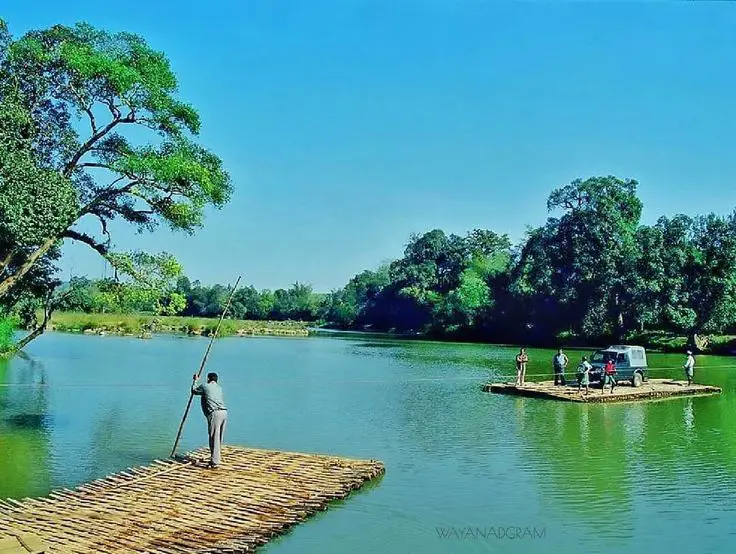
Nestled amidst the serenity of Wayanad, Kuruva Island is a hidden gem that beckons nature enthusiasts and wanderers alike. This unique and pristine haven, situated in the midst of the Kabini River, is a testament to the untouched beauty of Kerala’s landscapes.
A Verdant Tapestry:
Kuruva Island is a lush expanse of greenery spread over 950 acres, consisting of dense forests, vibrant flora, and meandering waterways. The island is a sanctuary for those seeking a respite from the urban hustle, providing an immersive experience in the heart of nature’s bounty.
Traversing Wooden Bridges:
The journey to Kuruva Island involves traversing a series of wooden bridges that connect different sections of this ecological haven. As visitors walk through the canopied pathways, the symphony of rustling leaves and chirping birds creates a tranquil ambiance, setting the stage for an immersive nature retreat.
Rich Biodiversity:
Kuruva Island is home to a diverse range of plant and animal species, making it a haven for nature lovers and wildlife enthusiasts. The island’s ecosystem includes rare orchids, towering trees, and various species of birds and butterflies. The rich biodiversity adds to the allure of the island, offering a unique glimpse into Kerala’s natural heritage.
Pristine Riverbanks:
The Kabini River, which surrounds Kuruva Island, adds to its scenic charm. The riverbanks, shaded by overhanging branches and fringed with lush greenery, provide perfect spots for visitors to relax and absorb the peaceful ambiance. The gentle murmur of the river complements the overall tranquility of the island.
Nature Trails and Exploration:
Kuruva Island offers designated nature trails that wind through its varied landscapes. Visitors can explore the dense forests, discover hidden clearings, and enjoy the natural beauty that unfolds at every turn. The trails cater to both the adventurous spirit and those seeking a leisurely stroll amidst nature.
Conservation and Responsible Tourism:
Efforts are in place to preserve the ecological balance of Kuruva Island. Conservation initiatives and responsible tourism practices ensure that the island remains an untouched paradise. Visitors are encouraged to respect the delicate ecosystem, refrain from littering, and contribute to the preservation of this natural sanctuary.
Lakkidi Viewpoint: Gateway to Wayanad’s Enchanting Vistas
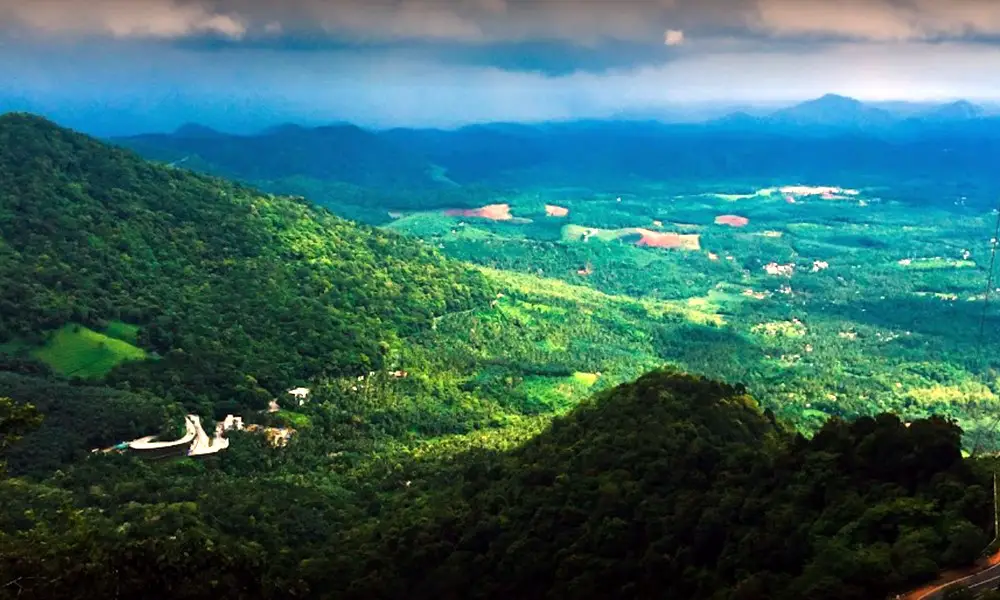
rn Ghats in the captivating district of Wayanad, Lakkidi Viewpoint stands as the gateway to a panoramic spectacle that captures the essence of Kerala’s natural beauty. Renowned as the Gateway to Wayanad, this scenic vantage point offers visitors an unparalleled view of the verdant landscapes that define this idyllic region.
Spectacular Thamarassery Ghat Pass:
As you ascend the winding roads to Lakkidi Viewpoint, you are greeted by the breathtaking views of the Thamarassery Ghat Pass. Nestled within the folds of the Western Ghats, this pass is a mesmerizing canvas of lush greenery, mist-covered hills, and winding roads that carve their way through the scenic terrain. The view from Lakkidi unfolds like a masterpiece, inviting you to immerse yourself in the natural wonders that lie ahead.
Monsoon Magic:
Lakkidi is renowned for receiving one of the highest annual rainfall averages in the world. During the monsoon season, the entire landscape transforms into a lush paradise, with mist-clad hills and vibrant foliage creating an ethereal ambiance. The view from the viewpoint during this time is nothing short of magical, offering a glimpse into Kerala’s monsoon allure.
Photographer’s Paradise:
For photography enthusiasts, Lakkidi Viewpoint is a haven of visual delights. The ever-changing play of light and shadow, the mist-kissed hills, and the winding roads weaving through the landscape provide endless opportunities to capture the beauty of Wayanad. Each frame becomes a testament to the timeless charm of this region.
Gateway to Wayanad:
Beyond its scenic grandeur, Lakkidi serves as the entrance to Wayanad, welcoming travelers with open arms. The cool mountain breeze, coupled with the breathtaking views, sets the tone for the unique experiences that await exploration in Wayanad’s diverse landscapes.
Challenges of the Roads:
The journey to Lakkidi Viewpoint involves navigating through steep and winding roads, adding an element of adventure to the visit. As you ascend, the anticipation builds, and the challenges of the road become a part of the overall experience, culminating in the rewarding vistas that unfold at the summit.
Local Delights:
Near the viewpoint, you’ll find local stalls offering traditional snacks and refreshments. Pausing for a cup of chai or indulging in local delicacies while soaking in the scenic surroundings adds a touch of authenticity to the visit.
Meenmutty Falls: Wayanad’s Majestic Cascade of Nature’s Grandeur
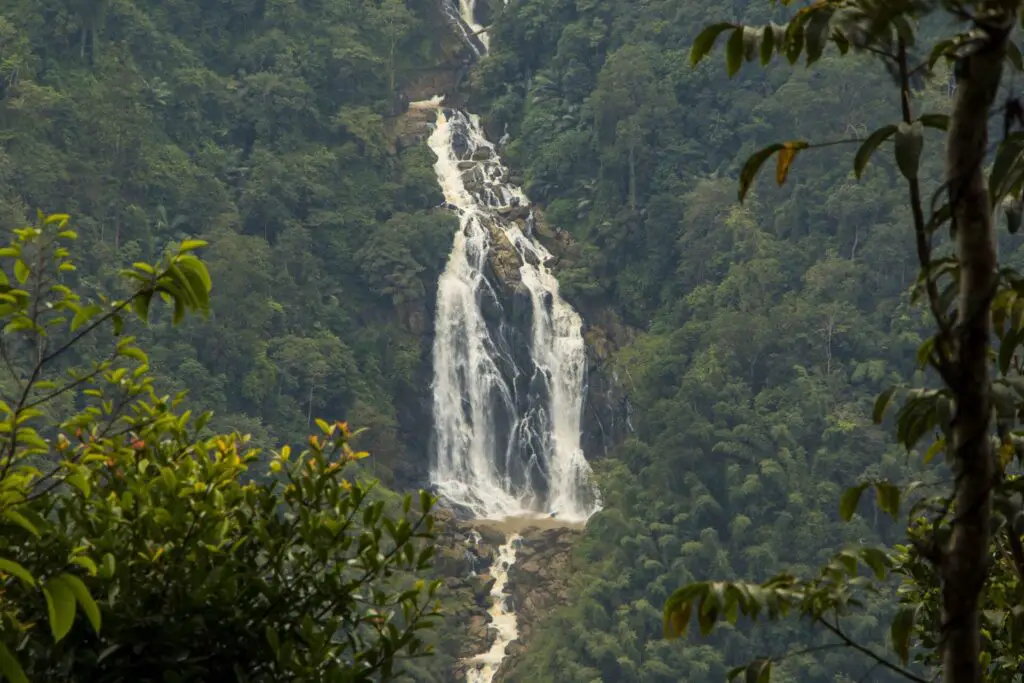
Nestled within the lush green landscapes of Wayanad in Kerala, Meenmutty Falls stands as a testament to the raw, untamed beauty that defines this region. As one of the largest and most spectacular waterfalls in the state, Meenmutty Falls invites adventurers and nature lovers to embark on a journey into the heart of Kerala’s pristine wilderness.
Location Amidst the Western Ghats:
Meenmutty Falls is situated within the folds of the Western Ghats, offering a perfect blend of scenic beauty and rich biodiversity. The waterfall is fed by the Meenmutty River, creating a cascading spectacle that descends over three tiers, covering a total distance of around 300 meters.
Trekking Through Nature’s Canvas:
The journey to witness the grandeur of Meenmutty Falls involves a trek through dense forests, rocky pathways, and undulating terrain. The trek, though challenging, is a rewarding adventure that immerses visitors in the natural wonders of Wayanad. As you traverse the pathways, the anticipation builds, and the distant roar of the falls signals your approach.
The Three-Tiered Cascade:
Meenmutty Falls reveals itself in three breathtaking tiers, each adding to the spectacle. The water descends gracefully over the rocky cliffs, creating a symphony of sound that echoes through the surrounding wilderness. The sheer height and force of the falls make it a sight to behold, capturing the essence of nature’s grandeur.
Natural Pool and Refreshing Dip:
At the base of Meenmutty Falls, a natural pool is formed by the cascading waters. This refreshing pool provides a perfect spot for visitors to take a dip and cool off after the trek. Surrounded by the misty spray of the waterfall and the lush greenery, the pool offers a tranquil retreat within nature’s embrace.
Conservation and Responsible Tourism:
Preserving the ecological balance around Meenmutty Falls is of utmost importance. Conservation efforts and responsible tourism practices are in place to ensure that the natural habitat remains undisturbed. Visitors are encouraged to respect the environment, follow designated trails, and contribute to the conservation initiatives.
Local Legends and Cultural Significance:
Meenmutty Falls is not only a natural wonder but also holds cultural significance. Local legends and stories add to the mystique of the falls, creating a sense of connection between the natural landscape and the cultural heritage of Wayanad.
Wayanad Wildlife Sanctuary: Where Nature’s Symphony Resounds

Nestled in the Western Ghats of Kerala, the Wayanad Wildlife Sanctuary is a biodiverse haven that beckons nature enthusiasts and wildlife lovers to witness the captivating beauty of the region’s flora and fauna. Spanning over 344 square kilometers, this sanctuary stands as a testament to Kerala’s commitment to preserving its rich natural heritage.
Diverse Ecosystem:
Wayanad Wildlife Sanctuary is a mosaic of lush forests, grasslands, and mountainous terrains that create a diverse ecosystem. Home to a wide array of plant and animal species, the sanctuary is a living tapestry of nature’s wonders. The varied landscapes cater to different habitats, making it an ideal sanctuary for a multitude of flora and fauna.
Iconic Wildlife:
The sanctuary is home to a rich variety of wildlife, including elephants, tigers, leopards, deer, langurs, and a plethora of bird species. The elusive and majestic Indian bison, locally known as ‘gaur,’ also finds sanctuary within these dense forests. The diverse array of inhabitants adds to the allure of the sanctuary, providing visitors with a unique opportunity to observe wildlife in their natural habitat.
Trekking Trails and Nature Walks:
For those seeking an immersive experience, Wayanad Wildlife Sanctuary offers well-laid trekking trails and nature walks. The trails wind through the dense forests, providing glimpses of the diverse flora and fauna that thrive in this protected habitat. Experienced guides accompany visitors, offering insights into the natural history and significance of the sanctuary.
Tholpetty Wildlife Sanctuary:
A part of the larger Wayanad Wildlife Sanctuary, Tholpetty Wildlife Sanctuary is a popular zone for wildlife safaris. Visitors can embark on thrilling jeep safaris that traverse through the sanctuary, allowing for close encounters with the resident wildlife. The safaris provide a unique opportunity to witness the beauty of the sanctuary’s landscapes and the vibrant wildlife that calls it home.
Conservation Initiatives:
Wayanad Wildlife Sanctuary actively engages in conservation initiatives to protect the fragile ecosystem and ensure the well-being of its inhabitants. Efforts are made to maintain a delicate balance between human activities and the natural environment, fostering coexistence and sustainability.
Educational and Research Significance:
Beyond its recreational appeal, Wayanad Wildlife Sanctuary holds educational and research significance. Researchers and wildlife enthusiasts often visit the sanctuary to study its diverse ecology, contributing to the broader understanding of the Western Ghats’ biodiversity.
Begur Wildlife Sanctuary: A Hidden Gem in Karnataka’s Natural Tapestry
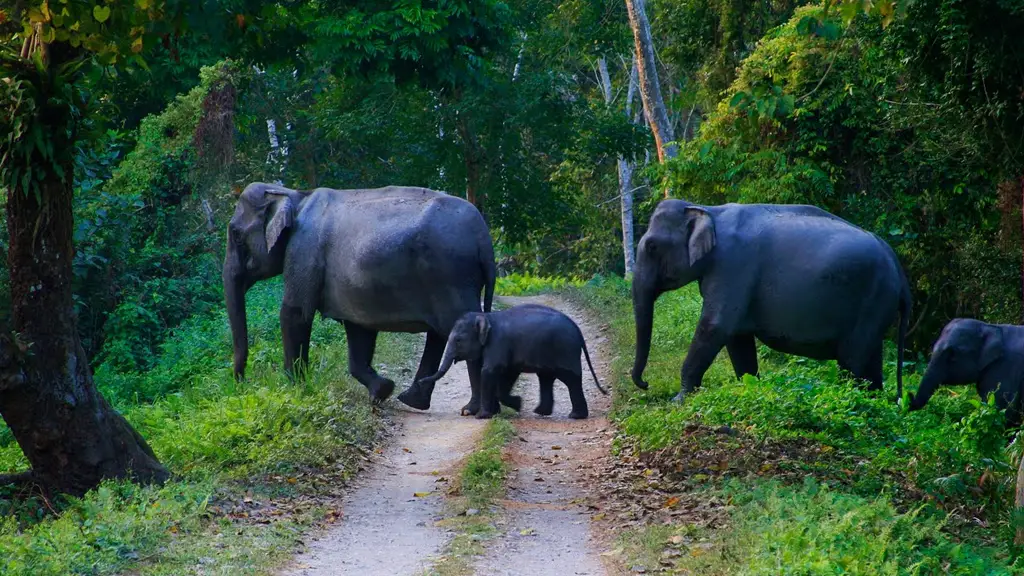
Nestled in the pristine landscapes of Karnataka, Begur Wildlife Sanctuary stands as a testament to the state’s commitment to preserving its rich biodiversity. This hidden gem, tucked away in the Chikmagalur district, offers nature enthusiasts and wildlife lovers a serene retreat into the heart of nature’s wonders.
Diverse Flora and Fauna:
Begur Wildlife Sanctuary spans over 100 square kilometers, encompassing a diverse range of ecosystems, including deciduous forests, grasslands, and hills. The sanctuary is home to a rich variety of flora and fauna, with species such as tigers, leopards, elephants, deer, langurs, and various bird species thriving in this natural habitat.
Birdwatcher’s Paradise:
For avid birdwatchers, Begur Wildlife Sanctuary is a paradise, boasting a plethora of avian species. The varied landscapes provide habitats for both resident and migratory birds, making it an ideal destination for bird enthusiasts. The sanctuary’s diverse avifauna includes hornbills, mynas, bulbul, peafowl, and many more.
Serene Nature Trails:
Begur offers nature enthusiasts well-maintained trails that wind through its diverse landscapes. These nature trails provide an immersive experience, allowing visitors to explore the sanctuary’s rich biodiversity while enjoying the tranquility of the surroundings. The trails cater to both adventure seekers and those seeking a leisurely stroll amidst nature.
Rich Cultural Heritage:
Begur Wildlife Sanctuary is not only a haven for wildlife but also holds cultural significance. The ancient Begur Fort, dating back to the Chola dynasty, is located within the sanctuary’s boundaries. The fort stands as a historical monument, adding a layer of cultural heritage to the natural beauty that surrounds it.
Conservation Initiatives:
Begur Wildlife Sanctuary actively engages in conservation initiatives to protect its delicate ecosystem. Efforts are made to minimize human impact and ensure the sustainable coexistence of wildlife and local communities. Conservation projects contribute to the preservation of biodiversity and the sanctuary’s overall ecological balance.
Adventure Opportunities:
Beyond its natural beauty, Begur offers adventure opportunities for those seeking an adrenaline rush. The sanctuary’s rugged terrains and trails are ideal for trekking and camping, providing adventure enthusiasts with an opportunity to connect with nature in a more immersive way.
Sultan Bathery: A Gateway to Wayanad’s Rich Heritage and Natural Beauty
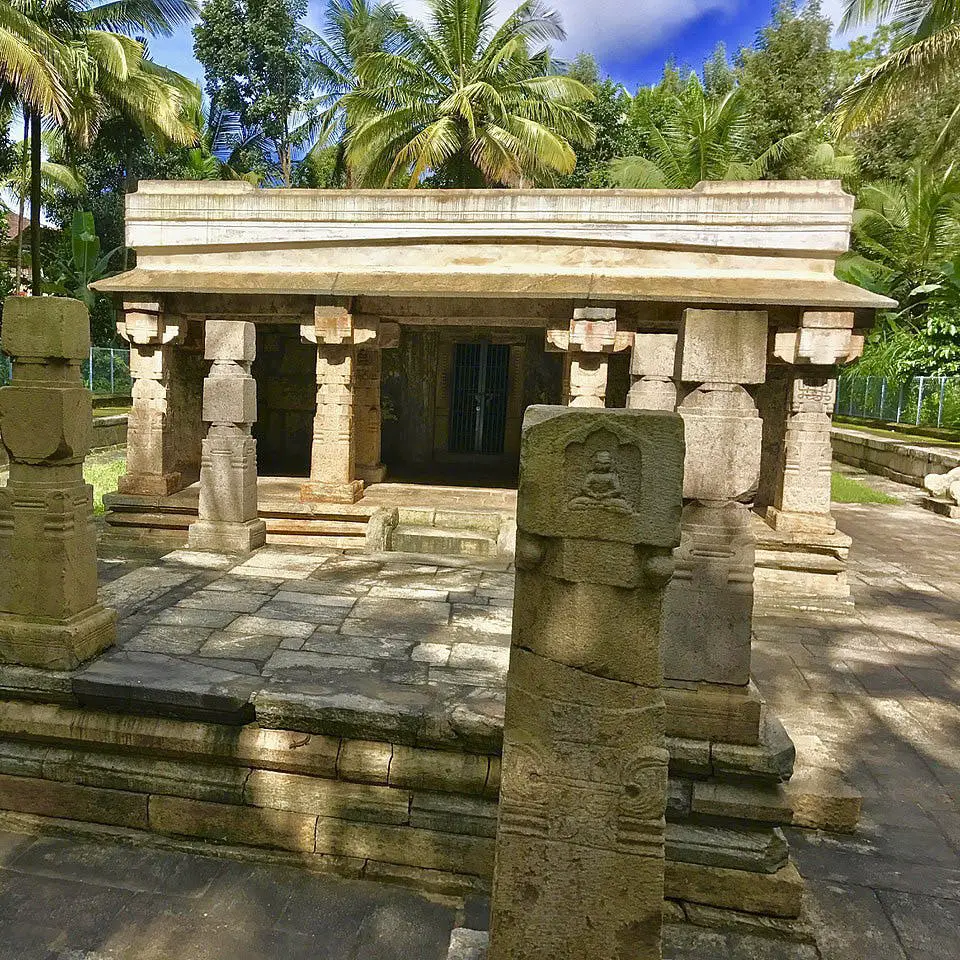
Nestled in the heart of Wayanad in Kerala, Sultan Bathery stands as a vibrant town that serves as a gateway to the region’s diverse landscapes and rich cultural heritage. Named after the historic Bathery (or Bateria) built by Tipu Sultan, this town invites travelers to explore its unique blend of history, nature, and local charm.
Historical Significance:
Sultan Bathery holds historical significance dating back to the 18th century when Tipu Sultan used the colossal fort-like structure as a battery. The remains of this historical site, also known as Tipu’s Fort or Sultan Bathery Jain Temple, offer a glimpse into the town’s storied past. Visitors can explore the intricate architecture and imagine the tales of bygone eras that echo within its walls.
Edakkal Caves:
Just a short drive from Sultan Bathery lies the renowned Edakkal Caves, a fascinating archaeological site that transports visitors back in time. The caves, adorned with ancient petroglyphs and pictorial carvings, provide a unique window into prehistoric civilization. The trek to Edakkal is an adventure in itself, with panoramic views of the Western Ghats rewarding those who reach the summit.
Nature’s Bounty:
Surrounded by the lush landscapes of Wayanad, Sultan Bathery offers a refreshing retreat into nature. The town is nestled amid tea plantations, spice gardens, and dense forests, providing ample opportunities for nature walks and exploration. The crisp mountain air and the verdant scenery make Sultan Bathery an ideal destination for those seeking tranquility.
Local Markets and Cuisine:
The town’s bustling markets are a treasure trove for those interested in local culture and traditional crafts. Sultan Bathery offers a range of spices, handicrafts, and authentic Kerala souvenirs. Additionally, the local cuisine, influenced by the vibrant flavors of Kerala, beckons food enthusiasts to savor regional delicacies and aromatic spices.
Wayanad Wildlife Sanctuary:
Sultan Bathery serves as a convenient base for exploring the Wayanad Wildlife Sanctuary. This sanctuary, rich in biodiversity, is home to elephants, tigers, deer, and various bird species. Wildlife enthusiasts can embark on safaris and nature trails to witness the untamed beauty of the Western Ghats.
Cultural Diversity:
The town’s cultural landscape is marked by a harmonious blend of diverse communities. Sultan Bathery hosts an array of festivals, showcasing the rich tapestry of Kerala’s cultural heritage. Visitors have the opportunity to witness traditional art forms, music, and dance performances that celebrate the town’s multicultural ethos.
Muthanga Wildlife Sanctuary: A Wilderness Haven in Wayanad
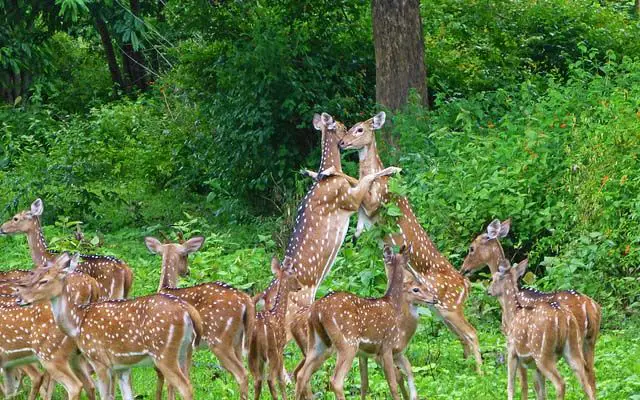
Nestled in the pristine landscapes of Wayanad in Kerala, Muthanga Wildlife Sanctuary stands as a testament to the region’s commitment to conserving its rich biodiversity. This sanctuary, also known as the Wayanad Wildlife Sanctuary, unfolds as a verdant haven for nature enthusiasts and wildlife aficionados alike.
Biodiversity Abounds:
Spanning over 344 square kilometers, Muthanga Wildlife Sanctuary encompasses a diverse range of ecosystems, including tropical moist forests, deciduous forests, and grasslands. Home to a myriad of plant and animal species, the sanctuary is a living testament to the natural wonders of the Western Ghats. Elephants, tigers, leopards, deer, langurs, and various species of birds thrive in this protected habitat, creating a rich tapestry of life.
Jeep Safaris into the Wilderness:
One of the most exhilarating ways to experience Muthanga Wildlife Sanctuary is through a guided jeep safari. Traversing through the undulating terrains of the sanctuary, visitors have the opportunity to witness the untamed beauty of the Western Ghats up close. The skilled guides navigate through the winding paths, enhancing the chances of spotting elusive wildlife in their natural habitat.
Avian Delights:
Muthanga is a paradise for birdwatchers, with the sanctuary’s diverse landscapes providing an ideal habitat for a plethora of avian species. From vibrant plumage to melodic calls, the sanctuary is home to a wide array of birds, including hornbills, peafowls, mynas, and various species of water birds. The birdwatching experience adds a melodious dimension to the sanctuary visit.
Nature Trails and Eco-Tourism Initiatives:
Muthanga Wildlife Sanctuary offers well-maintained nature trails that wind through its diverse landscapes. These trails provide an immersive experience for visitors, allowing them to explore the sanctuary’s rich biodiversity on foot. The eco-tourism initiatives within the sanctuary promote responsible tourism and contribute to the conservation efforts that sustain the delicate ecosystem.
Cultural Heritage:
Beyond its natural wonders, Muthanga is rich in cultural heritage. The indigenous tribal communities, including the Paniyas, Kurichiyas, and Kurumbar, have called these forests home for centuries. Visitors have the opportunity to engage with these communities, gaining insights into their traditional lifestyles and the deep connection they share with the sanctuary’s surroundings.
Conservation Initiatives:
Muthanga Wildlife Sanctuary actively engages in conservation initiatives to protect its delicate ecosystem. Efforts are made to minimize human impact and ensure the sustainable coexistence of wildlife and local communities. These initiatives contribute to the preservation of biodiversity, making Muthanga a beacon for wildlife conservation in the region.
Kanthanpara Waterfalls: Nature’s Cascading Symphony in Wayanad
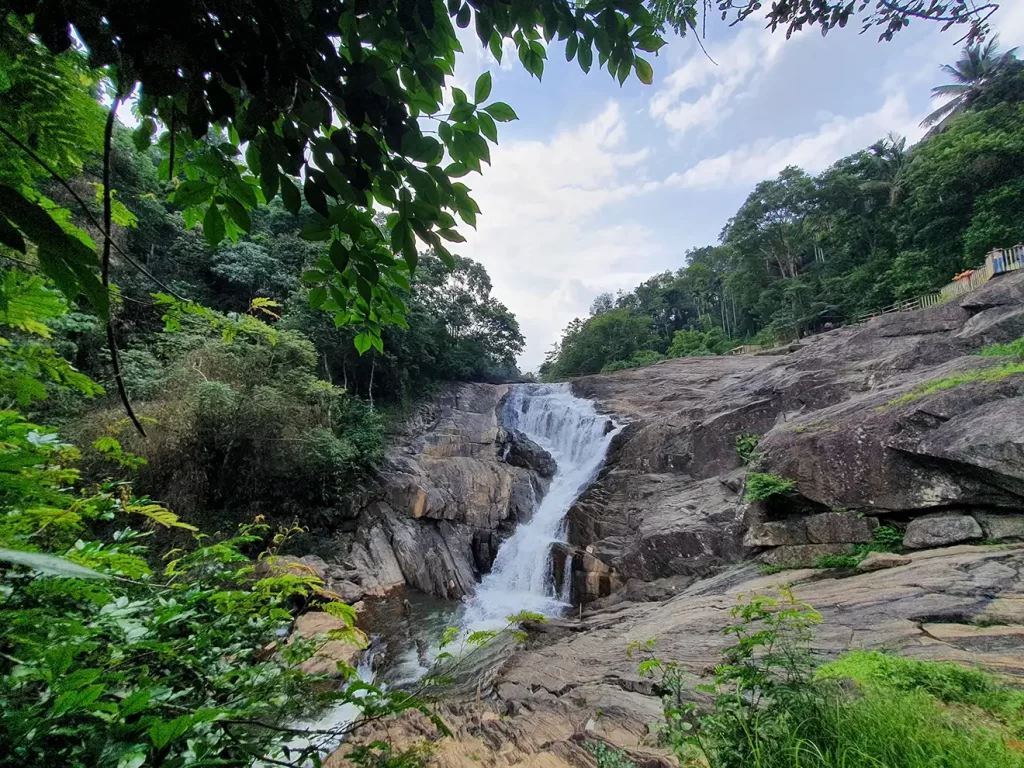
Nestled amidst the lush greenery of Wayanad in Kerala, Kanthanpara Waterfalls stands as a breathtaking testament to the region’s natural beauty. Tucked away in the embrace of the Western Ghats, this cascading wonder invites visitors to immerse themselves in the tranquil ambiance and soothing melody of falling water.
The Symphony of Cascading Waters:
Kanthanpara Waterfalls unveils its pristine beauty as a series of gentle cascades that flow down the rocky slopes. The rhythmic dance of water creates a symphony that resonates through the surrounding landscapes, offering a serene escape for those seeking solace in nature’s embrace.
Access and Trekking Trails:
Reaching Kanthanpara Waterfalls involves a scenic journey through the verdant landscapes of Wayanad. The trek to the falls is a delightful adventure, winding through dense forests and offering glimpses of the rich biodiversity that characterizes the region. The trails are well-maintained, making the journey accessible to both nature enthusiasts and casual visitors.
Natural Pool and Refreshing Dip:
At the base of Kanthanpara Waterfalls, a natural pool is formed by the cascading waters. This crystal-clear pool invites visitors to take a refreshing dip, offering a rejuvenating experience amid the soothing sounds of nature. Surrounded by the lush greenery and the misty spray from the falls, the pool becomes a tranquil oasis.
Birdwatcher’s Paradise:
Kanthanpara Waterfalls is not only a visual delight but also a haven for birdwatchers. The lush foliage surrounding the falls attracts a variety of avian species, making it an ideal spot for bird enthusiasts to witness the vibrant plumage and melodious calls of the local birdlife.
Picnic Spot Amid Nature’s Canvas:
The vicinity of Kanthanpara Waterfalls is equipped with facilities for picnics, making it an inviting spot for families and groups of friends. The shaded areas provide a comfortable setting for a leisurely meal, allowing visitors to bask in the natural beauty that surrounds them.
Conservation and Responsible Tourism:
Efforts to preserve the ecological balance around Kanthanpara Waterfalls are evident, with responsible tourism practices in place. Visitors are encouraged to respect the natural environment, dispose of waste responsibly, and contribute to the conservation of this pristine ecosystem.
Chethalayam Falls: Wayanad’s Hidden Gem of Cascading Beauty
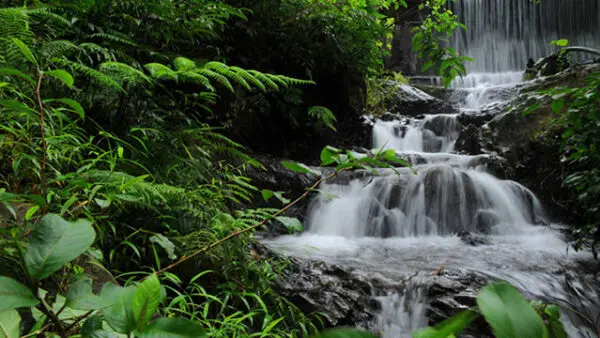
Nestled in the pristine landscapes of Wayanad in Kerala, Chethalayam Falls unveils its majestic allure as a hidden gem waiting to be discovered. Surrounded by dense forests and untouched beauty, this waterfall beckons nature enthusiasts and adventure seekers to experience the untamed charm of Wayanad.
Remote Beauty Amidst Nature’s Embrace:
Chethalayam Falls remains relatively secluded, tucked away from the usual tourist trails. The journey to this natural wonder involves traversing through winding paths and lush greenery, immersing visitors in the untouched wilderness that defines Wayanad’s landscapes. The remoteness of Chethalayam adds to its allure, offering a tranquil escape from the hustle and bustle of urban life.
Spectacular Cascades:
Chethalayam Falls descends gracefully from a rocky cliff, creating a spectacular cascade that captivates all who venture to witness its beauty. The clear waters glisten in the sunlight as they make their way down, surrounded by the verdant foliage of the Western Ghats. The symphony of falling water adds a soothing soundtrack to the natural ambiance.
Trekking Adventure:
The journey to Chethalayam Falls involves a trek through the lush forests, providing adventure seekers with an opportunity to connect with nature on a more intimate level. The trek is a blend of excitement and serenity, with the trail unveiling the diverse flora and fauna that thrive in this pristine ecosystem.
Birdwatcher’s Paradise:
Chethalayam Falls is not only a visual delight but also a haven for birdwatchers. The dense foliage surrounding the falls attracts a variety of avian species, making it an ideal spot for bird enthusiasts to witness the vibrant plumage and melodious calls of the local birdlife.
Natural Pool for Refreshment:
At the base of Chethalayam Falls, a natural pool is formed, inviting visitors to take a refreshing dip in the cool waters. Surrounded by the natural beauty of the Western Ghats, the pool becomes a tranquil oasis, providing a perfect spot for relaxation and rejuvenation.
Conservation and Respectful Exploration:
Preserving the ecological balance around Chethalayam Falls is crucial, and responsible tourism practices are encouraged. Visitors are urged to respect the natural environment, stay on designated paths, and contribute to the conservation of this pristine ecosystem.
Neelimala Viewpoint: A Panoramic Canvas of Wayanad’s Beauty
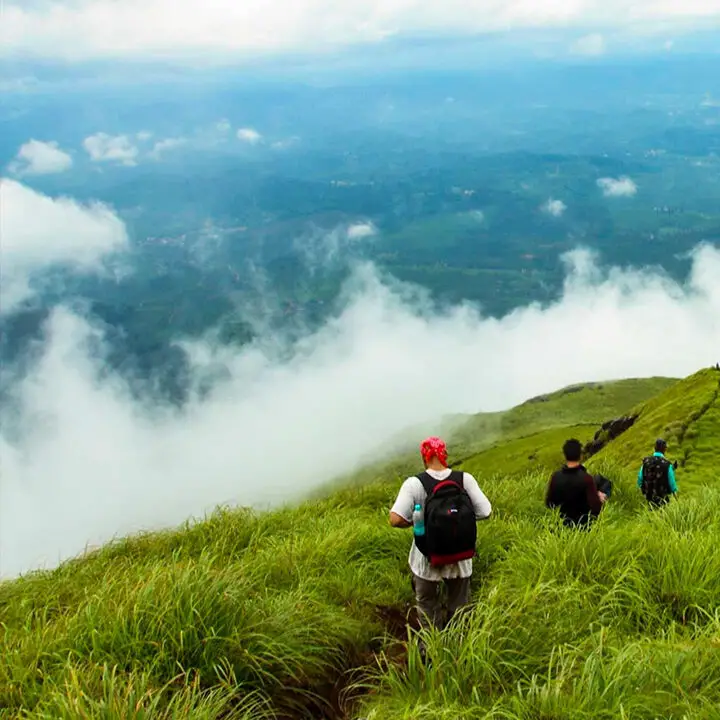
Perched atop the undulating hills of Wayanad in Kerala, Neelimala Viewpoint stands as a mesmerizing vantage point that offers a breathtaking panorama of the region’s natural splendor. Surrounded by lush greenery and rolling hills, this viewpoint beckons travelers to witness the ever-changing colors of Wayanad’s landscapes.
Spectacular Views of the Western Ghats:
Neelimala Viewpoint unveils an expansive vista of the Western Ghats, showcasing the majestic peaks and valleys that define the region. The viewpoint is a haven for those seeking an unobstructed view of the undulating hills, shrouded in mist during the monsoons and adorned with vibrant hues during the dry seasons.
Access and Adventure:
Reaching Neelimala involves a scenic journey through tea plantations and dense forests. The journey itself is an adventure, with winding roads offering glimpses of the diverse flora and fauna that thrive in the Western Ghats. The ascent to the viewpoint is a blend of excitement and anticipation, as each turn reveals a new facet of Wayanad’s beauty.
Sunrise and Sunset Splendor:
Neelimala is renowned for its spectacular sunrise and sunset views. The changing hues of the sky, reflected upon the hills and valleys, create a visual masterpiece that captivates all who witness it. Whether bathed in the golden glow of dawn or adorned with the warm colors of dusk, Neelimala offers a magical spectacle that lingers in the memory.
Chembra Peak and Meenmutty Falls:
The view from Neelimala encompasses the awe-inspiring sight of Chembra Peak, the highest peak in Wayanad. The iconic heart-shaped lake on Chembra adds to the allure of the landscape. Additionally, Meenmutty Falls, one of the largest waterfalls in Kerala, graces the scene, adding a touch of cascading beauty to the panoramic canvas.
Trekking Opportunities:
Neelimala also serves as a starting point for treks to the Meenmutty Falls. The trek is an adventurous journey through dense forests and undulating terrains, providing trekkers with an opportunity to connect with the natural beauty of Wayanad. The trek adds an element of exploration to the overall Neelimala experience.
Local Flavors and Refreshments:
Near Neelimala Viewpoint, local stalls offer traditional snacks and refreshments. Pausing for a cup of chai or indulging in local delicacies while soaking in the scenic surroundings adds a touch of authenticity to the visit.
Conservation and Responsible Tourism:
Preserving the ecological balance around Neelimala is essential, and responsible tourism practices are encouraged. Visitors are urged to respect the natural environment, dispose of waste responsibly, and contribute to the conservation of this pristine ecosystem.
Pakshipathalam Bird Sanctuary: A Feathered Haven in Wayanad’s Wilderness
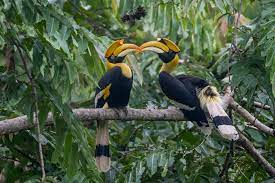
Hidden within the dense forests of Wayanad in Kerala, Pakshipathalam Bird Sanctuary stands as a sanctuary of serenity, offering refuge to an array of avian species. Tucked away in the Western Ghats, this lesser-known gem beckons birdwatchers and nature enthusiasts to explore its pristine landscapes and witness the vibrant avifauna that calls it home.
Remote Wilderness Adventure:
Access to Pakshipathalam involves a journey through remote and untouched wilderness, adding an adventurous dimension to the birdwatching experience. Visitors navigate through dense forests, rocky terrains, and meandering streams, immersing themselves in the natural beauty that defines Wayanad’s landscapes.
Rich Biodiversity:
Pakshipathalam is renowned for its diverse flora and fauna, with an emphasis on the avian population. The sanctuary is a haven for birdwatchers, featuring a variety of resident and migratory bird species. Hornbills, woodpeckers, bulbuls, and the elusive Malabar Whistling Thrush are among the many birds that adorn the lush foliage.
Unique Rock Formations:
The sanctuary is known for its unique rock formations, adding a surreal touch to the landscape. Massive boulders and cliffs create a distinctive backdrop for birdwatching, with the elevation providing an ideal vantage point to observe the winged inhabitants in their natural habitat.
Natural Caves and Edakkal Caves:
Pakshipathalam is home to natural caves, adding an element of exploration to the birdwatching adventure. The caves are a fascinating feature of the sanctuary, and the nearby Edakkal Caves, adorned with ancient petroglyphs, provide a historical and cultural dimension to the overall experience.
Guided Treks and Birdwatching:
Exploring Pakshipathalam requires guided treks, allowing visitors to navigate the sanctuary’s intricate pathways with the expertise of local guides. The treks provide birdwatchers with opportunities to spot rare species and witness the diverse birdlife that thrives in this secluded habitat.
Conservation and Responsible Tourism:
Preserving the delicate balance of Pakshipathalam’s ecosystem is a priority, and responsible tourism practices are actively encouraged. Visitors are urged to respect the natural environment, adhere to designated trails, and contribute to the conservation initiatives that safeguard the sanctuary’s pristine landscapes.
Korome Mosque: A Historical Jewel in Wayanad’s Cultural Tapestry
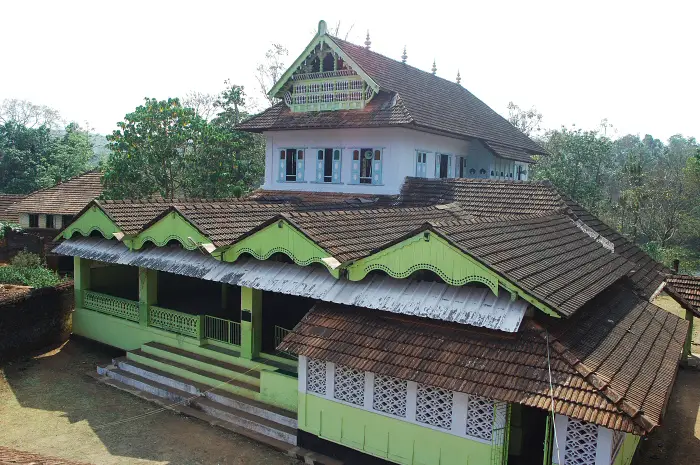
Nestled in the scenic landscapes of Wayanad in Kerala, Korome Mosque stands as a testament to the rich cultural heritage that defines this region. Steeped in history, this mosque holds a unique place in the hearts of the local community, reflecting the diverse and harmonious ethos that characterizes Wayanad.
Architectural Elegance:
Korome Mosque is an architectural marvel, showcasing a blend of traditional Islamic design elements and local craftsmanship. The mosque’s structure is characterized by its intricate woodwork, ornate detailing, and a striking combination of colors. The minarets, adorned with fine carvings, rise elegantly against the backdrop of Wayanad’s lush greenery.
Historical Significance:
The history of Korome Mosque dates back centuries, intertwining with the cultural fabric of Wayanad. It is believed to have been established during the era of the Mysore Sultanate, adding a historical layer to its significance. The mosque has stood witness to the passage of time, preserving the architectural and cultural heritage of the region.
Cultural Harmony:
Korome Mosque is not only a religious center but also a symbol of cultural harmony. Its architecture reflects the influences of the local Malabar style, creating a unique fusion that mirrors the diversity of Wayanad. The mosque stands as a testament to the peaceful coexistence of various communities in this picturesque region.
Spiritual Oasis:
For the local Muslim community, Korome Mosque serves as a spiritual oasis, providing a serene environment for prayers and religious gatherings. The tranquil surroundings and the mosque’s architectural grandeur create an atmosphere conducive to reflection and worship.
Community Engagement:
The mosque is an integral part of the local community, playing a role beyond religious activities. It serves as a meeting point for social and cultural events, fostering a sense of unity among the residents of Korome and neighboring areas. The mosque’s courtyard often becomes a space for community celebrations and events.
Preservation Efforts:
Efforts are made to preserve the historical and cultural significance of Korome Mosque. Local initiatives, community involvement, and responsible tourism practices contribute to the conservation of this architectural gem, ensuring that it continues to stand as a symbol of Wayanad’s heritage.
Valliyoor Kavu Bhagavathi Temple: A Spiritual Oasis in the Heart of Wayanad
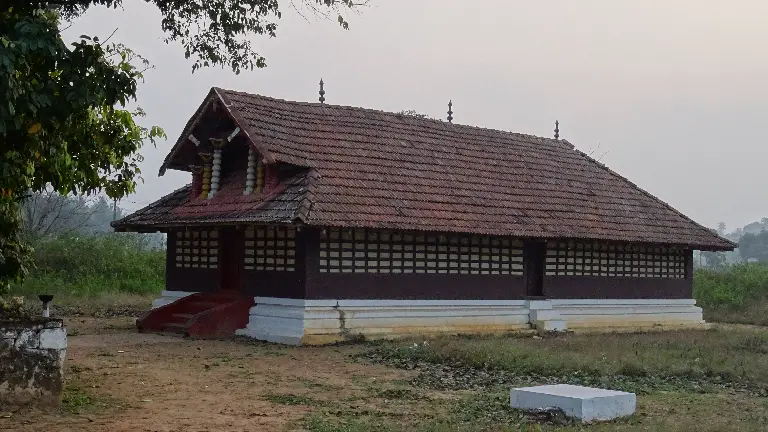
Nestled amid the lush greenery of Wayanad in Kerala, Valliyoor Kavu Bhagavathi Temple stands as a sacred haven, drawing devotees and seekers of spiritual solace. This ancient temple, dedicated to the goddess Bhagavathi, is not only a center of religious worship but also a cultural landmark that embodies the rich traditions of the region.
Sacred Grounds and Serene Ambiance:
Valliyoor Kavu Bhagavathi Temple is situated in a tranquil setting, surrounded by dense forests and pristine landscapes. The sacred grounds exude a serene ambiance, creating an atmosphere of peace and devotion for those who visit. The temple’s architecture, adorned with traditional Kerala-style elements, adds to its cultural and aesthetic appeal.
Devotion to Goddess Bhagavathi:
The temple is dedicated to Goddess Bhagavathi, a revered deity in Kerala’s Hindu tradition. Devotees flock to Valliyoor Kavu to seek the blessings of the goddess, believed to be a powerful and benevolent force. The rituals and ceremonies conducted at the temple reflect the deep-rooted spiritual practices that have been passed down through generations.
Annual Festival Celebrations:
Valliyoor Kavu Bhagavathi Temple comes alive during its annual festival, a grand celebration that attracts devotees and visitors from far and wide. The festival is marked by vibrant processions, traditional music, and cultural performances, creating a joyous and festive atmosphere that showcases the cultural richness of Wayanad.
Cultural Heritage and Rituals:
The temple is not only a spiritual hub but also a custodian of Wayanad’s cultural heritage. The rituals performed at Valliyoor Kavu reflect the unique traditions and customs of the region. From ceremonial dances to elaborate poojas, the temple serves as a cultural repository that honors the spiritual legacy of Wayanad.
Community Engagement and Social Harmony:
Valliyoor Kavu Bhagavathi Temple is a focal point for community engagement, fostering social harmony among the local residents. The temple’s courtyard often serves as a gathering space for cultural events, discussions, and community initiatives, creating a sense of unity among the devotees.
Conservation and Preservation:
Efforts are made to preserve the architectural and cultural heritage of Valliyoor Kavu Bhagavathi Temple. Local initiatives and community involvement contribute to the conservation of the temple complex, ensuring that it continues to stand as a symbol of Wayanad’s spiritual and cultural legacy.
Wayanad Heritage Museum: Unveiling the Cultural Tapestry of Wayanad
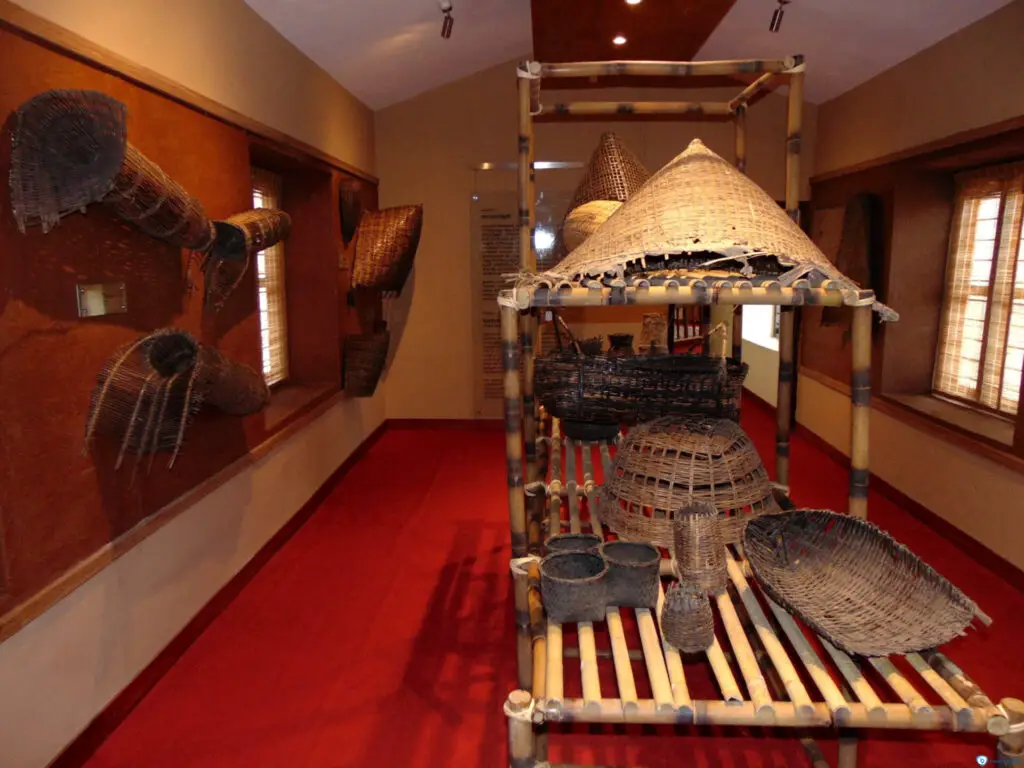
Nestled in the heart of Wayanad in Kerala, the Wayanad Heritage Museum stands as a repository of the region’s rich cultural heritage. Housed in a distinctive red-brick building, this museum invites visitors to embark on a journey through time, exploring the traditions, art, and history that define Wayanad’s diverse and vibrant identity.
Architectural Splendor:
The Wayanad Heritage Museum, also known as the Ambalavayal Heritage Museum, is a cultural landmark in itself. The red-brick structure, reminiscent of colonial architecture, adds to the museum’s charm. The building stands as a testament to the historical influences that have shaped Wayanad, creating a visually striking backdrop for the exhibits within.
Timeless Artifacts and Exhibits:
The museum’s exhibits offer a fascinating glimpse into the bygone eras of Wayanad. From ancient artifacts to ethnographic displays, the collections showcase the evolution of the region’s culture, traditions, and way of life. Visitors can explore a diverse range of exhibits, including tribal artifacts, agricultural implements, and historical relics that narrate the tale of Wayanad’s cultural mosaic.
Tribal Art and Craft:
One of the highlights of the Wayanad Heritage Museum is its focus on the indigenous tribal communities that have inhabited the region for centuries. The museum houses a remarkable collection of tribal art and craft, including traditional jewelry, pottery, and artifacts that reflect the unique customs and skills of Wayanad’s tribal population.
Archaeological Section:
The museum’s archaeological section features artifacts that date back to the Neolithic and Megalithic periods, offering insights into the ancient history of Wayanad. Stone tools, pottery, and other archaeological finds provide a tangible connection to the region’s prehistoric past.
Natural History Section:
For nature enthusiasts, the Wayanad Heritage Museum includes a Natural History Section that showcases the rich biodiversity of Wayanad. Preserved specimens of flora and fauna, along with informative displays, offer a comprehensive understanding of the region’s ecological diversity.
Cultural and Educational Hub:
Beyond its role as a museum, the Wayanad Heritage Museum serves as a cultural and educational hub for both locals and tourists. The museum hosts cultural events, workshops, and educational programs that contribute to the preservation and promotion of Wayanad’s heritage.
Community Engagement and Conservation:
The museum actively engages with the local community, fostering a sense of pride in Wayanad’s cultural legacy. Conservation efforts are integral to the museum’s mission, ensuring the preservation of artifacts and promoting sustainable tourism practices.
Phantom Rock, Wayanad: A Geological Marvel Shrouded in Mystique
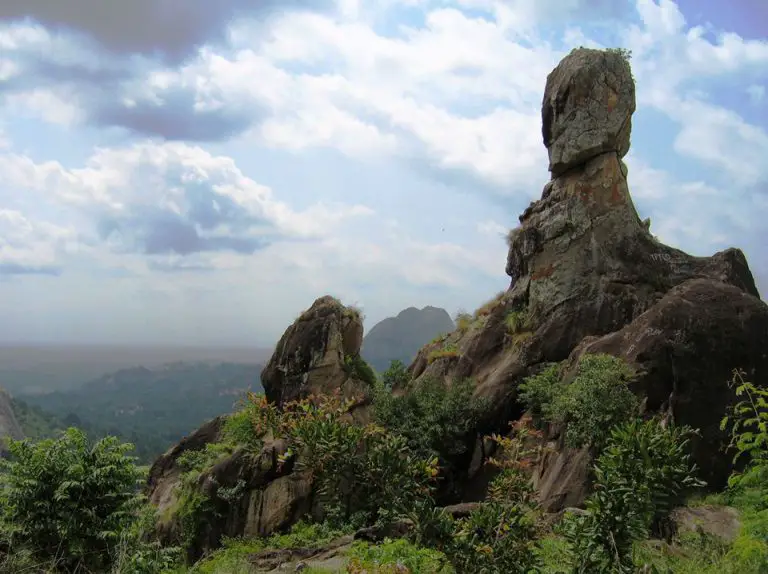
Nestled amidst the picturesque landscapes of Wayanad in Kerala, Phantom Rock stands as a geological wonder that captivates visitors with its mysterious silhouette. This unique rock formation, sculpted by nature’s hand, has become a must-visit destination for those seeking to witness the intriguing shapes carved into Wayanad’s ancient landscapes.
Eerie Resemblance:
Phantom Rock derives its name from its uncanny resemblance to a colossal skull, with features that evoke the image of a phantom or ghostly figure. The rock’s distinctive shape, perched atop a cluster of smaller rocks, adds an air of mystery to its natural grandeur, sparking the imagination of those who behold it.
Geological Formation:
Phantom Rock is a result of natural weathering and erosion processes that have shaped the rocks over millennia. The softer layers of the rock have eroded more rapidly, leaving behind the striking and enigmatic formations that define the landscape. The resilience of the harder rock layers has given rise to the peculiar and almost supernatural appearance of Phantom Rock.
Scenic Surroundings:
Located in the quaint village of Ambalavayal, Phantom Rock is surrounded by verdant tea plantations and lush greenery. The scenic beauty of the Western Ghats provides a stunning backdrop, creating a serene and tranquil atmosphere around the rock. Visitors are treated to breathtaking views of the rolling hills and the pristine landscapes that characterize Wayanad.
Photographer’s Delight:
Phantom Rock has become a paradise for photographers and nature enthusiasts. The play of light and shadow on the rock’s surface during different times of the day adds to its allure. The surrounding landscapes, with their vibrant hues and contrasting textures, provide a perfect canvas for capturing the essence of Wayanad’s natural beauty.
Local Legends and Folklore:
The unique shape of Phantom Rock has sparked local legends and folklore. The rock is said to have mystical properties, and some believe that it is frequented by spirits. These tales add a layer of intrigue to the site, making Phantom Rock not only a geological marvel but also a cultural landmark with a touch of mysticism.
Responsible Tourism:
As Phantom Rock gains popularity, efforts are made to promote responsible tourism practices. Visitors are encouraged to respect the natural environment, stay on designated paths, and contribute to the preservation of this geological wonder. Conservation initiatives aim to maintain the delicate balance between tourism and the protection of Wayanad’s natural treasures.
Chain Tree, Wayanad: A Living Monument to Local Legend
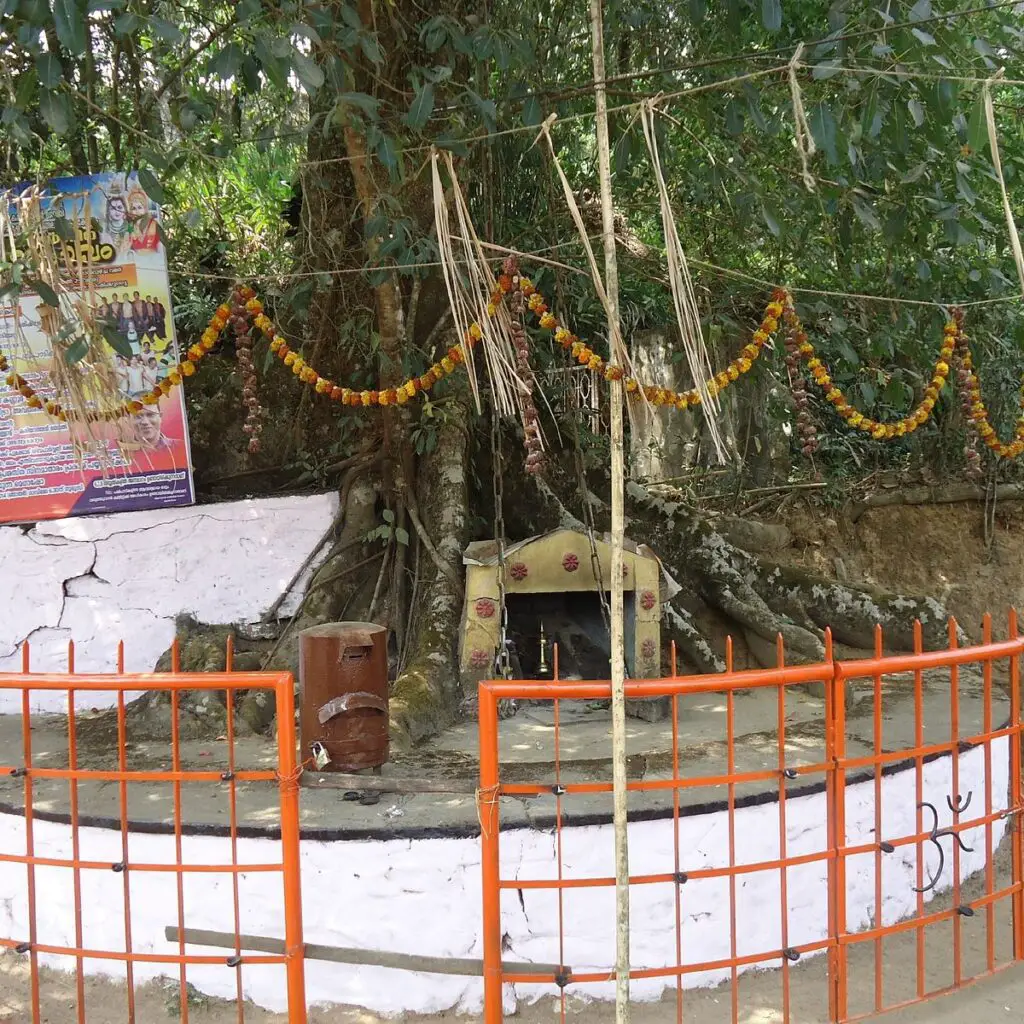
Nestled along the winding roads of Wayanad in Kerala, the Chain Tree stands as an intriguing landmark, steeped in local folklore and historical significance. This ancient tree, adorned with a chain that wraps around its massive trunk, invites travelers to delve into the mysterious tale that has become an integral part of Wayanad’s cultural heritage.
The Legend of the Chain Tree:
The Chain Tree is associated with a captivating legend that dates back to the colonial era. As the story goes, a tribal youth named Karinthandan played a crucial role in guiding a British engineer through the treacherous Thamarassery Ghat Pass. Unfortunately, fearing that the knowledge of the secret route would render him obsolete, the engineer betrayed Karinthandan, leading to his tragic death.
In retribution, it is believed that Karinthandan’s spirit haunted the pass, causing accidents and misfortune to those who traversed the route. To appease the troubled spirit, a priest eventually placed a chain around a nearby tree, where Karinthandan was believed to have been buried, in an attempt to pacify his soul and break the curse.
Historical Significance:
The Chain Tree serves as a living testament to the historical events that unfolded in Wayanad during the colonial period. The chain wrapped around the tree symbolizes the attempt to reconcile with the past and find solace for the restless spirit of Karinthandan. Visitors to the site can witness this poignant symbol and reflect on the complex interplay of history, culture, and the supernatural.
Spectacular Location:
Situated near the Lakkidi Viewpoint, the Chain Tree is surrounded by lush greenery and offers panoramic views of the Western Ghats. Travelers often make a stop at this site not only to unravel the mystery of the chained tree but also to enjoy the scenic beauty that characterizes the landscapes of Wayanad.
Cultural Heritage and Tourism:
The Chain Tree has become a point of interest for tourists seeking a unique blend of history and folklore. The site’s cultural and historical significance, coupled with its natural charm, attracts visitors eager to explore the enigmatic tales that echo through Wayanad’s ancient terrain.
Preserving the Legend:
Efforts are made to preserve the legend of the Chain Tree, with locals and authorities working together to maintain the site’s cultural integrity. The story continues to be passed down through generations, ensuring that the significance of the Chain Tree remains an essential part of Wayanad’s cultural narrative.
Karapuzha Dam: A Reservoir of Tranquility in Wayanad
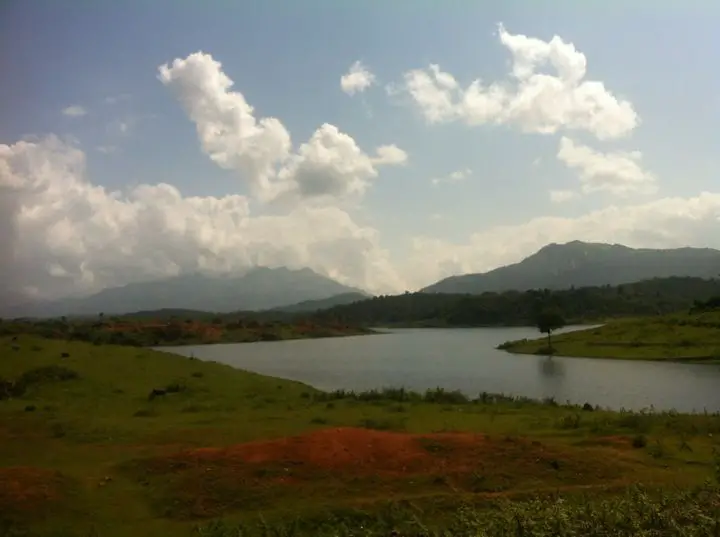
Nestled amidst the pristine landscapes of Wayanad in Kerala, Karapuzha Dam stands as a tranquil oasis, offering a harmonious blend of natural beauty and human ingenuity. This reservoir, nestled in the Western Ghats, has become a popular destination, inviting visitors to witness the serene waters and lush surroundings that define Wayanad’s scenic allure.
Engineering Marvel amid Nature’s Canvas:
Karapuzha Dam is not just a reservoir; it is an engineering marvel strategically positioned to harness the flow of the Karapuzha River. Built across the tributary of the Kabini River, the dam not only serves as a vital water resource for irrigation but also enhances the region’s natural charm with its expansive reservoir.
Spectacular Scenery:
The dam is framed by the picturesque Western Ghats, creating a breathtaking backdrop for visitors. The undulating hills and verdant forests that surround Karapuzha Dam provide a stunning panorama, making it an ideal spot for those seeking solace in nature’s embrace. The calm waters reflect the lush greenery, creating a serene ambiance that captivates all who visit.
Boating and Water Activities:
Karapuzha Dam’s vast reservoir invites visitors to engage in boating and water activities. Boating on the tranquil waters offers a unique perspective of the surrounding hills and forests. The experience is both relaxing and invigorating, providing a perfect way to appreciate the natural beauty that envelopes the dam.
Birdwatcher’s Paradise:
The dam’s environs are a haven for birdwatchers. The rich biodiversity of the region attracts a variety of avian species, making it an ideal destination for those eager to witness the vibrant plumage and melodious calls of the local birdlife. The peaceful atmosphere encourages a leisurely exploration of the diverse bird species that inhabit the area.
Recreational Retreat:
Karapuzha Dam serves as a recreational retreat for locals and tourists alike. The well-maintained gardens along the dam’s periphery offer a serene setting for picnics and leisurely strolls. Families and friends gather to enjoy the tranquility, creating a sense of community amidst the natural beauty of Wayanad.
Conservation and Responsible Tourism:
Efforts are made to balance tourism with conservation at Karapuzha Dam. Responsible tourism practices, such as waste management and ecosystem preservation, are encouraged to maintain the dam’s ecological balance. Visitors are urged to respect the natural surroundings and contribute to the preservation of this pristine environment.
Pazhassi Raja Tomb: A Tribute to the Lion of Kerala’s Guerrilla Warfare
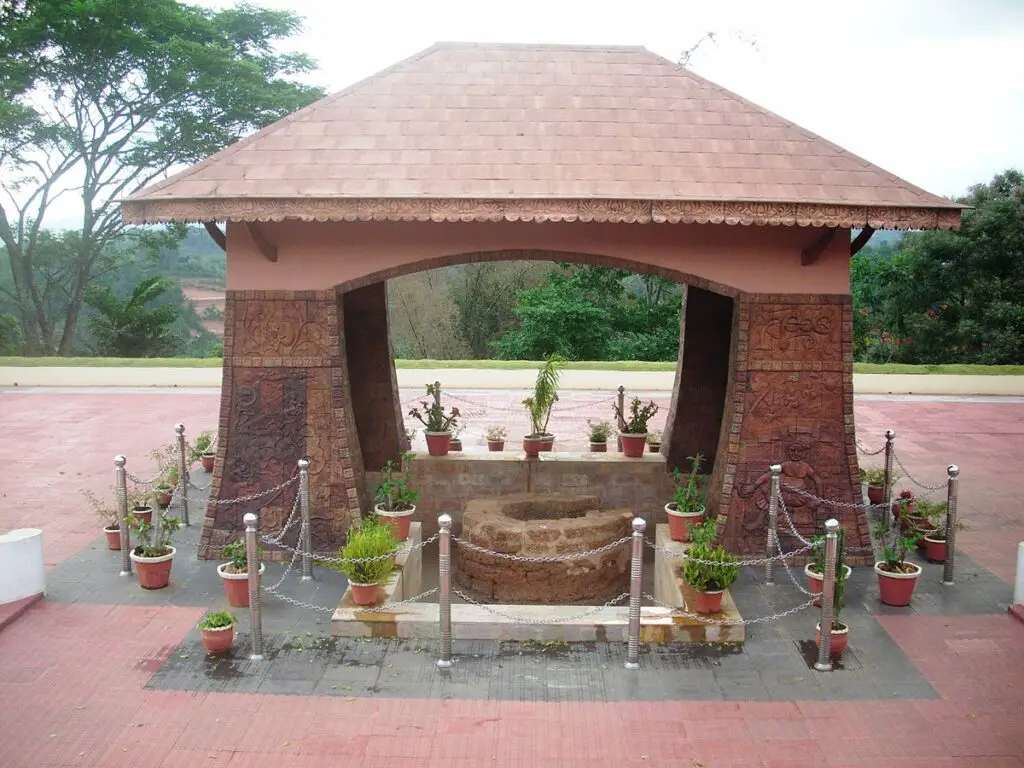
Nestled in the historic town of Mananthavady in Wayanad, the Pazhassi Raja Tomb stands as a solemn tribute to one of Kerala’s most revered and valiant heroes, Kerala Varma Pazhassi Raja. The tomb, located in the heart of Wayanad, serves as a poignant reminder of the indomitable spirit and sacrificial legacy of the “Lion of Kerala.”
Historical Legacy:
Kerala Varma Pazhassi Raja, also known as the “Lion of Kerala,” was a prominent and courageous ruler who played a pivotal role in the resistance against British colonial forces during the 18th century. His fearless guerrilla warfare tactics earned him a legendary status as a symbol of resistance and the embodiment of the spirit of the land.
Tomb Architecture and Location:
The Pazhassi Raja Tomb is a modest yet dignified structure, reflecting the historical importance it holds. Located amidst lush greenery, the tomb’s architecture is simple and traditional, providing a serene and reflective atmosphere for visitors paying their respects to this illustrious leader.
Martyrdom and Sacrifice:
Pazhassi Raja’s courageous efforts against the British East India Company are etched into the annals of Kerala’s history. His resistance, known as the Cotiote War, was marked by guerrilla tactics, strategic brilliance, and unwavering commitment to the cause of freedom. The tomb marks the final resting place of this valiant leader, who sacrificed his life for the sovereignty of his land.
Cultural and Historical Significance:
The Pazhassi Raja Tomb is not just a burial site; it is a cultural and historical monument that resonates with the tales of valor and sacrifice. Visitors can explore the tomb and its surroundings, gaining insight into the tumultuous times of colonial resistance and the heroic exploits of Pazhassi Raja.
Museum and Artifacts:
Adjacent to the tomb is the Pazhassi Raja Museum, which houses a collection of artifacts, weapons, and historical documents related to Pazhassi Raja and the Cotiote War. The museum provides a comprehensive narrative of the tumultuous events that unfolded during that period, allowing visitors to connect with the rich history of Wayanad.
Community Reverence:
The Pazhassi Raja Tomb is not only a tourist attraction but also a site of community reverence. Locals and visitors alike gather to pay homage to Pazhassi Raja, commemorating his sacrifice and the spirit of resistance that he embodied. The annual Pazhassi Raja Jayanti is observed with cultural events and ceremonies, further emphasizing the enduring legacy of this heroic figure.
Karalad Lake: A Serene Gem Amidst Wayanad’s Green Canopy
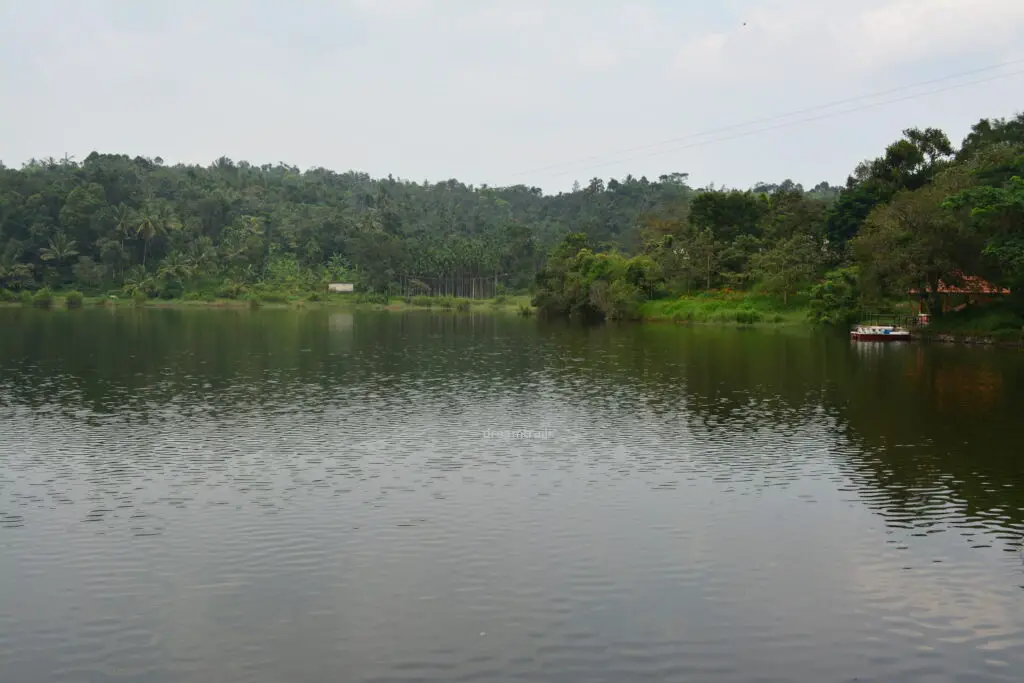
Tucked away in the lush landscapes of Wayanad in Kerala, Karalad Lake stands as a hidden jewel, inviting nature enthusiasts and tranquility seekers to immerse themselves in its pristine beauty. Surrounded by verdant hills and vibrant foliage, the lake offers a peaceful retreat away from the bustle of urban life.
Natural Splendor:
Karalad Lake is embraced by the Western Ghats, creating a breathtaking setting that reflects the untouched beauty of Wayanad. The crystal-clear waters of the lake mirror the dense green canopy overhead, forming a picturesque scene that captivates all who venture to this serene destination.
Boating Amidst Nature’s Canvas:
One of the highlights of Karalad Lake is the opportunity for boating on its tranquil waters. Visitors can embark on a leisurely boat ride, gliding across the lake’s surface while surrounded by the soothing sounds of nature. The experience provides a unique perspective of the lush landscapes, allowing travelers to appreciate the unspoiled beauty that defines Wayanad.
Birdwatcher’s Paradise:
Karalad Lake is a haven for birdwatchers, offering a rich avian diversity that adds to its allure. The surrounding forests are home to a variety of bird species, making it an ideal destination for those eager to spot and observe the vibrant plumage and melodies of the local feathered residents.
Serenity and Reflection:
The peaceful ambiance of Karalad Lake makes it an ideal spot for introspection and relaxation. Whether visitors choose to stroll along the lakeside pathways, find a quiet spot to read a book, or simply gaze at the tranquil waters, the lake provides a serene retreat for those seeking solace in nature.
Surrounded by Biodiversity:
Karalad Lake is nestled within a region known for its rich biodiversity. The surrounding forests are home to diverse flora and fauna, creating a harmonious ecosystem that contributes to the overall ecological balance of Wayanad. The lake itself serves as a vital water source for the local wildlife.
Responsible Tourism:
Efforts are made to promote responsible tourism practices around Karalad Lake. Visitors are encouraged to respect the natural environment, dispose of waste responsibly, and contribute to the conservation initiatives that safeguard this pristine ecosystem. These measures aim to ensure the long-term sustainability of Karalad Lake and its surrounding habitats.
Varambetta Mosque: A Spiritual Haven in Wayanad’s Landscape
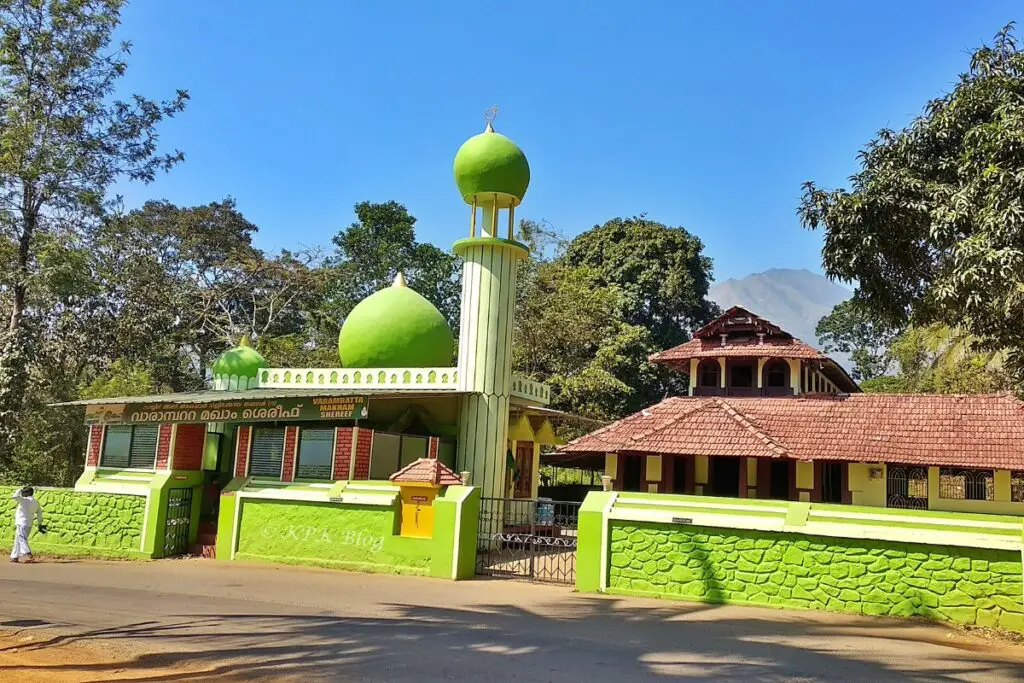
Nestled amid the scenic beauty of Wayanad in Kerala, Varambetta Mosque stands as a serene testament to the region’s cultural diversity and religious harmony. This mosque, with its elegant architecture and spiritual ambiance, beckons visitors to experience the tranquility and cultural richness that define the heart of Wayanad.
Architectural Elegance:
Varambetta Mosque is characterized by its distinctive and elegant architecture, reflecting a harmonious blend of traditional Islamic design elements and local craftsmanship. The mosque’s minarets, domes, and ornate detailing stand as a testament to the artistic prowess of its builders, creating a visually striking landmark against the backdrop of Wayanad’s lush landscapes.
Religious Significance:
The mosque serves as a sacred space for the local Muslim community, providing a place for worship, reflection, and community engagement. The spiritual ambiance within the mosque’s premises fosters a sense of serenity, inviting devotees and visitors alike to connect with their faith and find solace in the peaceful surroundings.
Cultural Harmony:
Varambetta Mosque exemplifies the cultural harmony that characterizes Wayanad, where diverse communities coexist in unity. The mosque’s architecture reflects the influences of the local Malabar style, creating a unique fusion that mirrors the multicultural ethos of Wayanad. It stands as a symbol of the peaceful coexistence of various communities in this enchanting region.
Community Engagement:
The mosque is not only a place of worship but also a center for community engagement. It serves as a gathering space for social and cultural events, fostering a sense of unity among the local residents. The mosque’s courtyard often becomes a venue for community celebrations, events, and educational activities that contribute to the social fabric of Wayanad.
Preservation of Cultural Heritage:
Varambetta Mosque actively participates in preserving the cultural heritage of Wayanad. The mosque’s role as a cultural and religious center is integral to maintaining the region’s identity. Local initiatives, community involvement, and responsible tourism practices contribute to the conservation of the mosque and its surroundings.
Interfaith Understanding:
Varambetta Mosque plays a role in promoting interfaith understanding and cultural exchange. The mosque welcomes visitors of all backgrounds, encouraging dialogue and fostering a spirit of mutual respect. This openness contributes to the rich tapestry of Wayanad’s cultural landscape.
Thirunelli Temple: A Spiritual Haven Amidst Wayanad’s Revered Hills
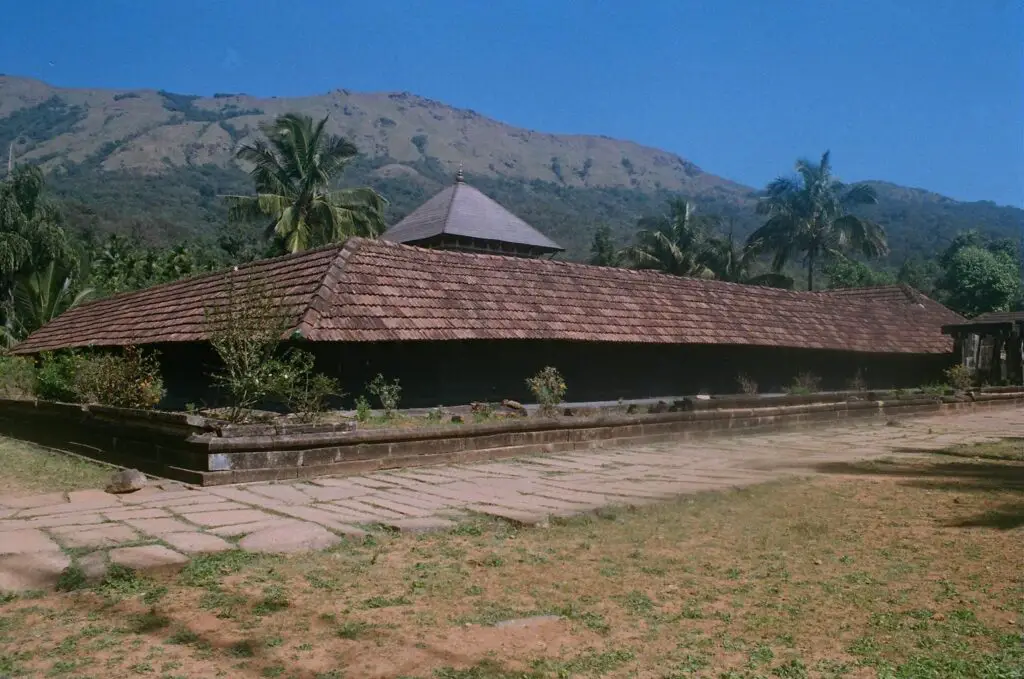
Nestled in the lush landscapes of Wayanad, Kerala, Thirunelli Temple stands as an ancient abode of spirituality, rich in history, mythology, and cultural significance. Surrounded by verdant hills and dense forests, this sacred site is a testament to the enduring spiritual heritage that permeates the heart of Wayanad.
Historical Roots:
Thirunelli Temple is steeped in history, with origins dating back over a millennium. It is believed to have been constructed by Lord Brahma himself, making it one of the few temples dedicated to Lord Vishnu’s avatar, Lord Krishna. The temple’s ancient architecture and the sacred pond nearby create an atmosphere that resonates with the echoes of centuries gone by.
Sacred Papanasini:
One of the unique features of Thirunelli Temple is the sacred Papanasini, a stream that flows nearby. Devotees believe that a dip in the holy waters of Papanasini can cleanse one of sins, offering spiritual purification. The stream is said to have divine properties, and pilgrims come from far and wide to partake in the ritualistic cleansing in its pristine waters.
Pilgrimage Destination:
Thirunelli Temple holds immense significance as a pilgrimage destination. Devotees, seeking spiritual solace and divine blessings, embark on a journey to this sacred site. The temple’s remote location amidst the hills adds an element of tranquility to the pilgrimage experience, fostering a deep sense of connection with the divine.
Surrounded by Nature’s Grandeur:
The temple’s setting amidst the lush Western Ghats enhances the spiritual experience for visitors. Surrounded by dense forests, mist-clad hills, and the gentle hum of flowing streams, Thirunelli Temple creates an ethereal ambiance that is both serene and awe-inspiring. The natural beauty that envelops the temple adds to the spiritual journey of those who visit.
Vedic Rituals and Festivals:
Thirunelli Temple is a hub of Vedic rituals and traditional ceremonies. The priests, following ancient traditions, conduct elaborate pujas and rituals that contribute to the temple’s spiritual sanctity. The annual festival, known as Thirunelli Utsavam, attracts pilgrims and devotees who participate in the festivities, adding vibrancy to the temple’s cultural tapestry.
Architectural Grandeur:
The architecture of Thirunelli Temple showcases the exquisite craftsmanship of a bygone era. The temple is constructed in the traditional Kerala style, with intricately carved pillars, ornate sculptures, and a distinctive roof design. The structure reflects the cultural and architectural heritage that has been preserved over centuries.
Conservation and Cultural Heritage:
Efforts are made to conserve the cultural and ecological heritage surrounding Thirunelli Temple. Responsible tourism practices, community engagement, and environmental preservation initiatives contribute to the sustainable development of this sacred site, ensuring that it remains a revered destination for generations to come.
FAQs
1. Q: What makes Wayanad a must-visit destination?
A: Wayanad is a captivating region in Kerala, known for its lush landscapes, diverse wildlife, historical monuments, and cultural richness. It offers a unique blend of natural beauty and historical significance.
2. Q: How many places are covered in the blog, and what types of destinations can I expect?
A: The blog covers over 30 must-visit places in Wayanad, including waterfalls, viewpoints, temples, wildlife sanctuaries, historical sites, and more. The destinations offer a wide range of experiences for every type of traveler.
3. Q: Are there adventure options in Wayanad mentioned in the blog?
A: Yes, Wayanad offers various adventure options, including trekking to Chembra Peak, exploring wildlife sanctuaries, and visiting unique rock formations like Phantom Rock. The blog highlights adventurous activities available in the region.
4. Q: Can I find information about cultural and historical sites in Wayanad?
A: Absolutely! The blog covers cultural and historical landmarks such as temples, mosques, and museums, providing insights into Wayanad’s rich heritage and diverse cultural tapestry.
5. Q: Are there recommendations for nature lovers and photography enthusiasts?
A: Yes, the blog includes destinations like viewpoints, lakes, and waterfalls that are perfect for nature lovers and photography enthusiasts. These spots offer breathtaking views and opportunities to capture the natural beauty of Wayanad.
6. Q: Is there information on responsible tourism and conservation efforts in Wayanad?
A: Yes, the blog acknowledges the importance of responsible tourism. It highlights efforts for conservation, eco-friendly practices, and community engagement to ensure the sustainable development of Wayanad’s natural and cultural treasures.
7. Q: How can I plan my itinerary based on the mentioned places?
A: The blog provides insights into each destination, making it easier to plan your itinerary based on your interests. Whether you prefer nature, adventure, or cultural exploration, you’ll find recommendations to tailor your Wayanad experience.
8. Q: Are there tips for visiting specific places like wildlife sanctuaries or trekking spots?
A: Absolutely! The blog includes tips for visiting wildlife sanctuaries, trekking spots, and other specific destinations. This information ensures a smooth and enjoyable experience while exploring Wayanad.
9. Q: Can I learn about the cultural significance of religious sites mentioned in the blog?
A: Yes, the blog provides insights into the cultural significance of religious sites, including temples and mosques. It explores the historical and spiritual aspects, allowing readers to appreciate the cultural diversity of Wayanad.
10. Q: Where can I find additional information about Wayanad’s local customs and festivals?
A: While the blog focuses on must-visit places, additional information about local customs and festivals can be obtained through local tourism offices, cultural events, and interactions with the welcoming residents of Wayanad.

